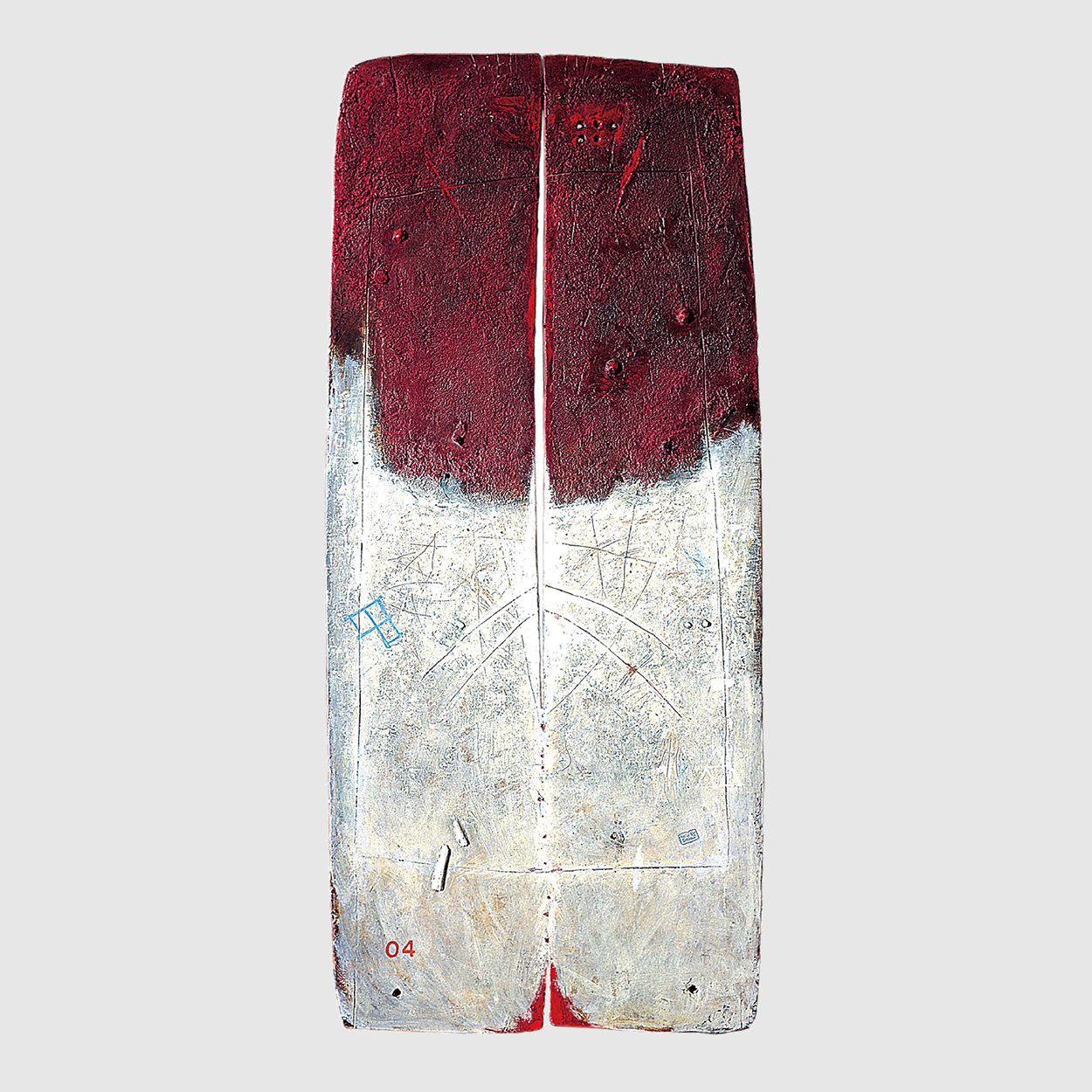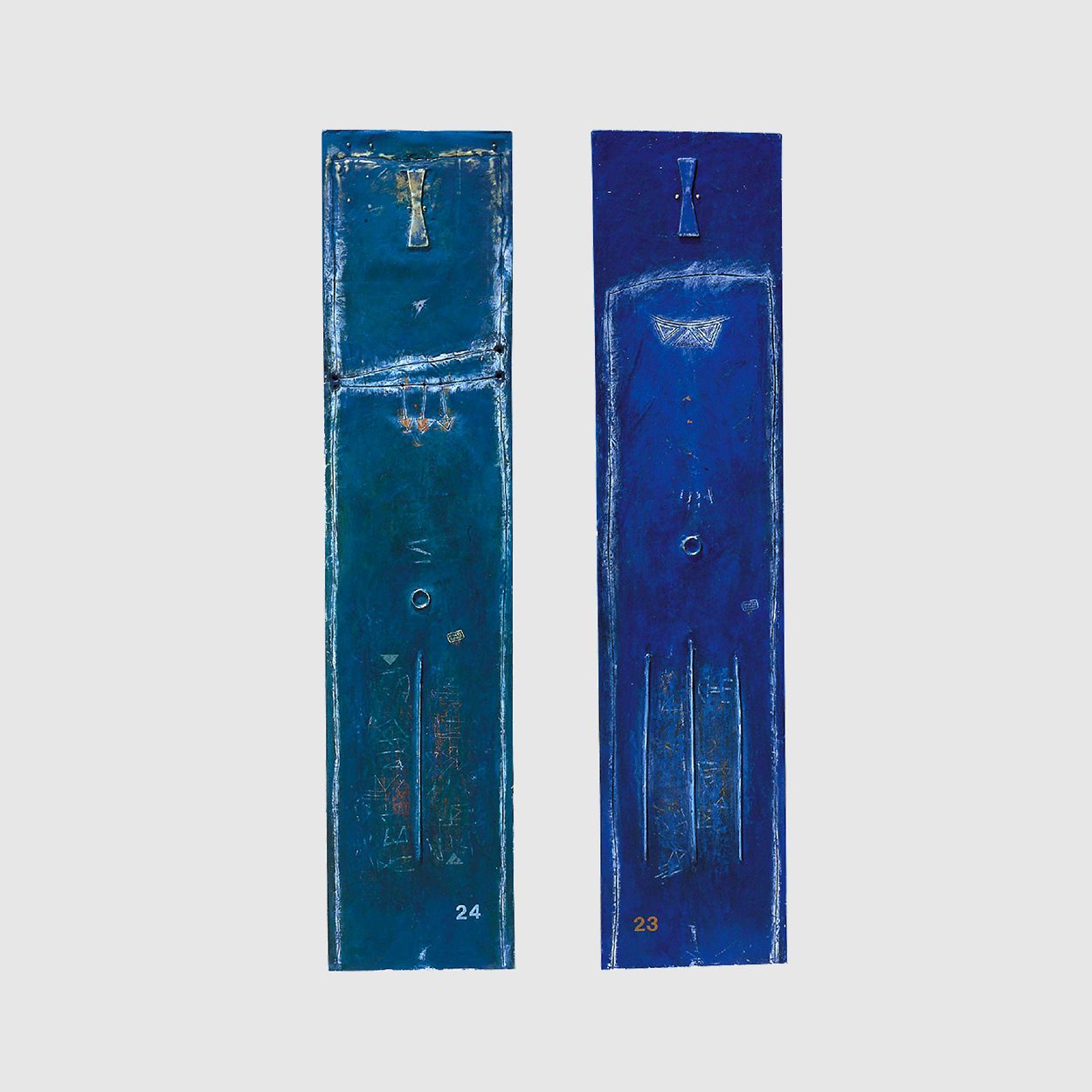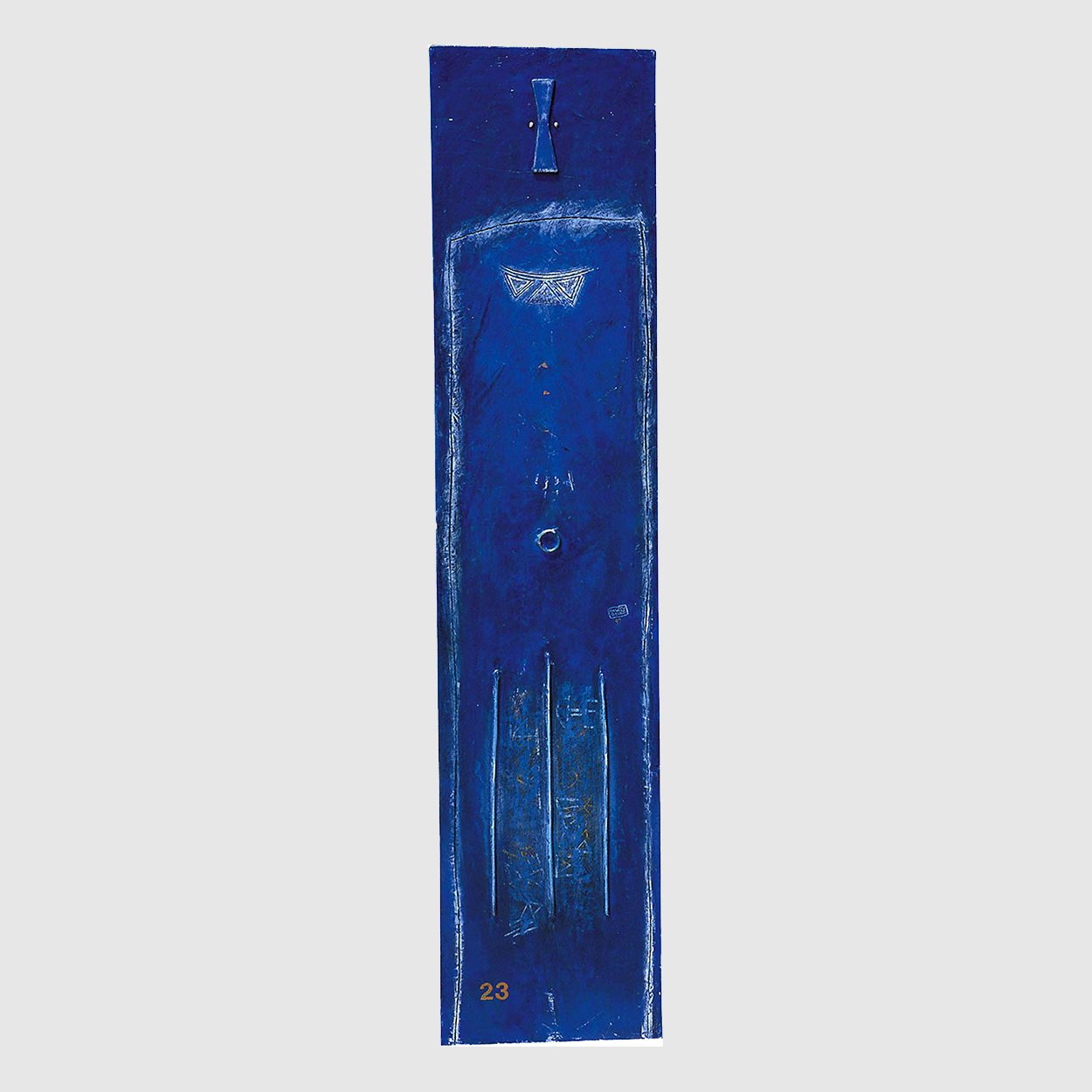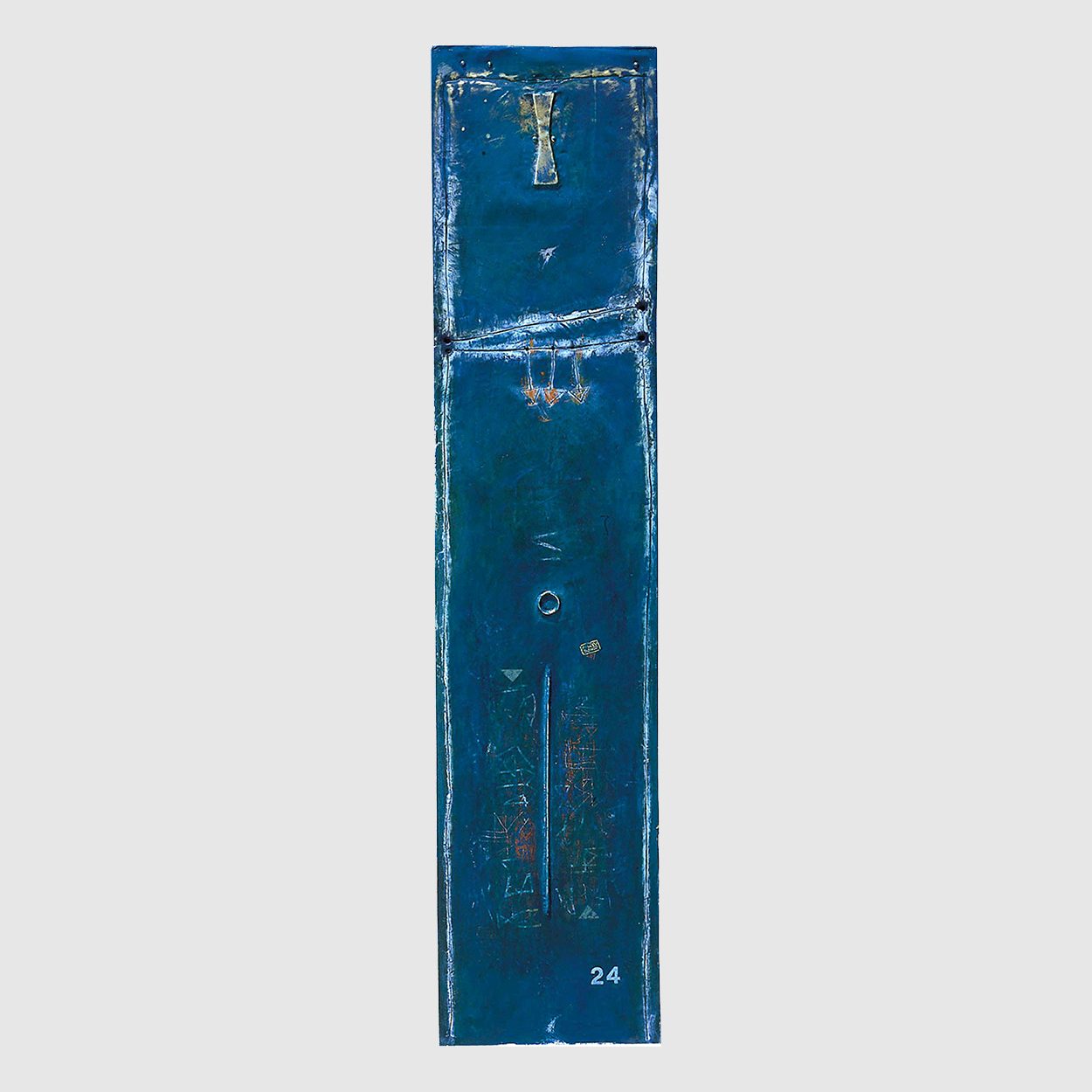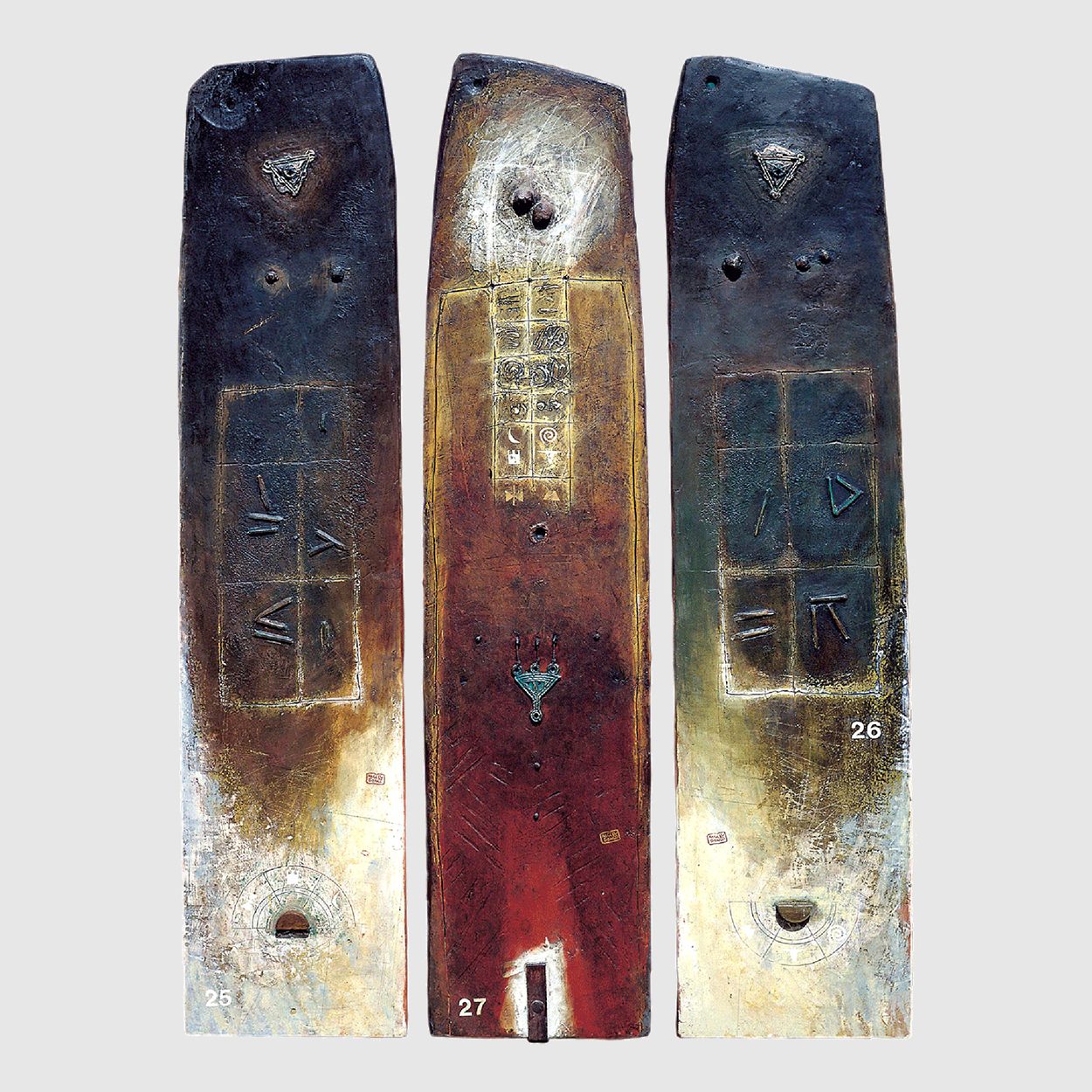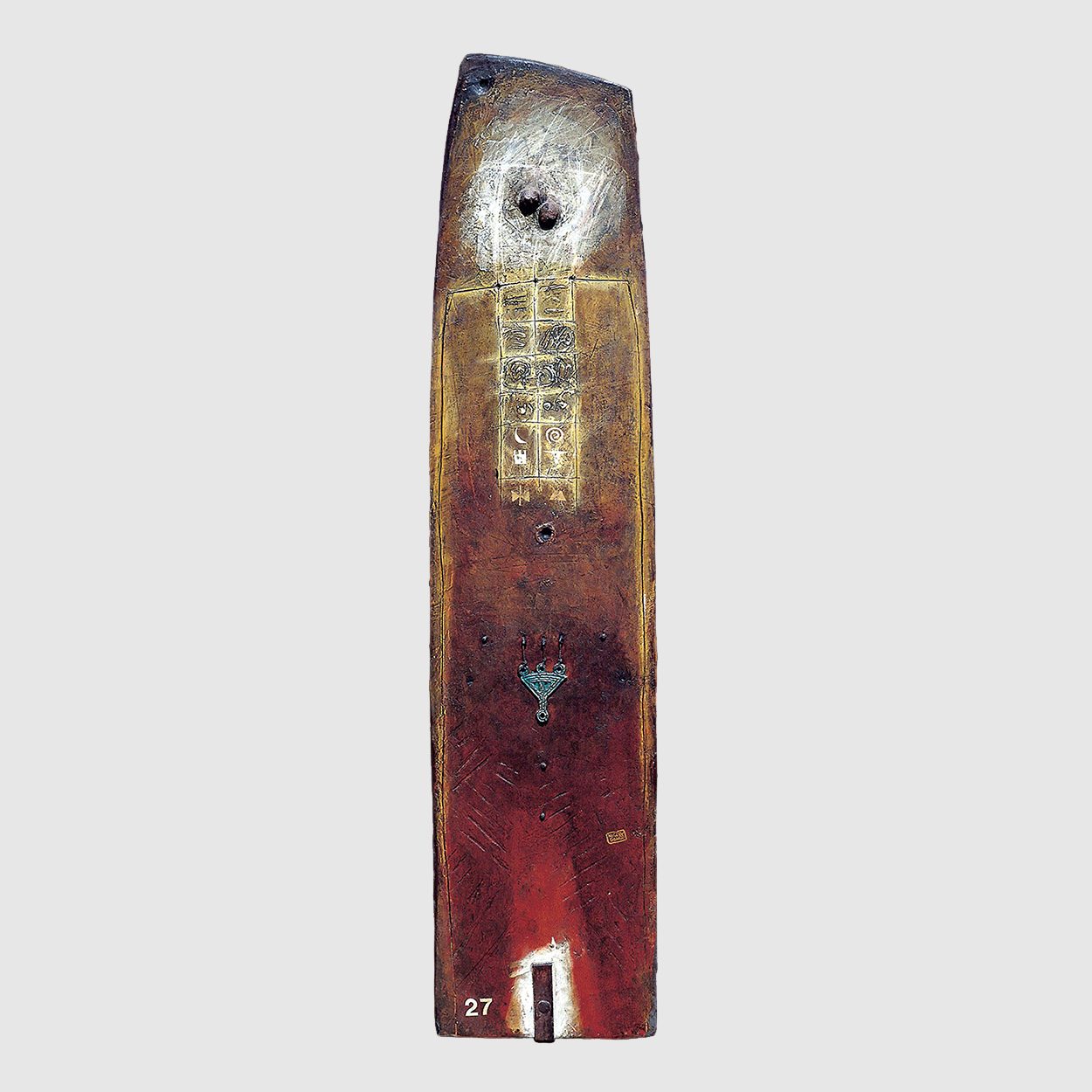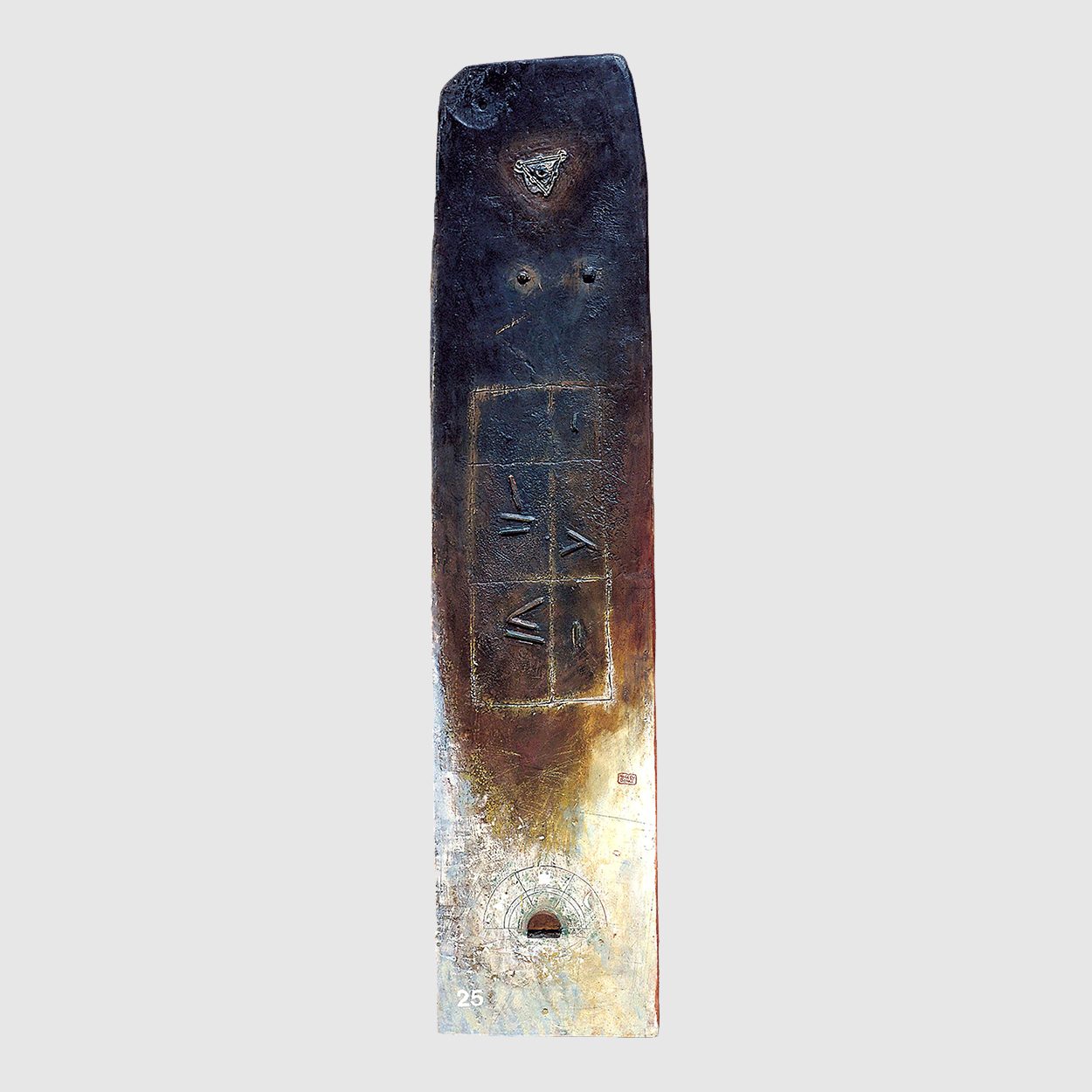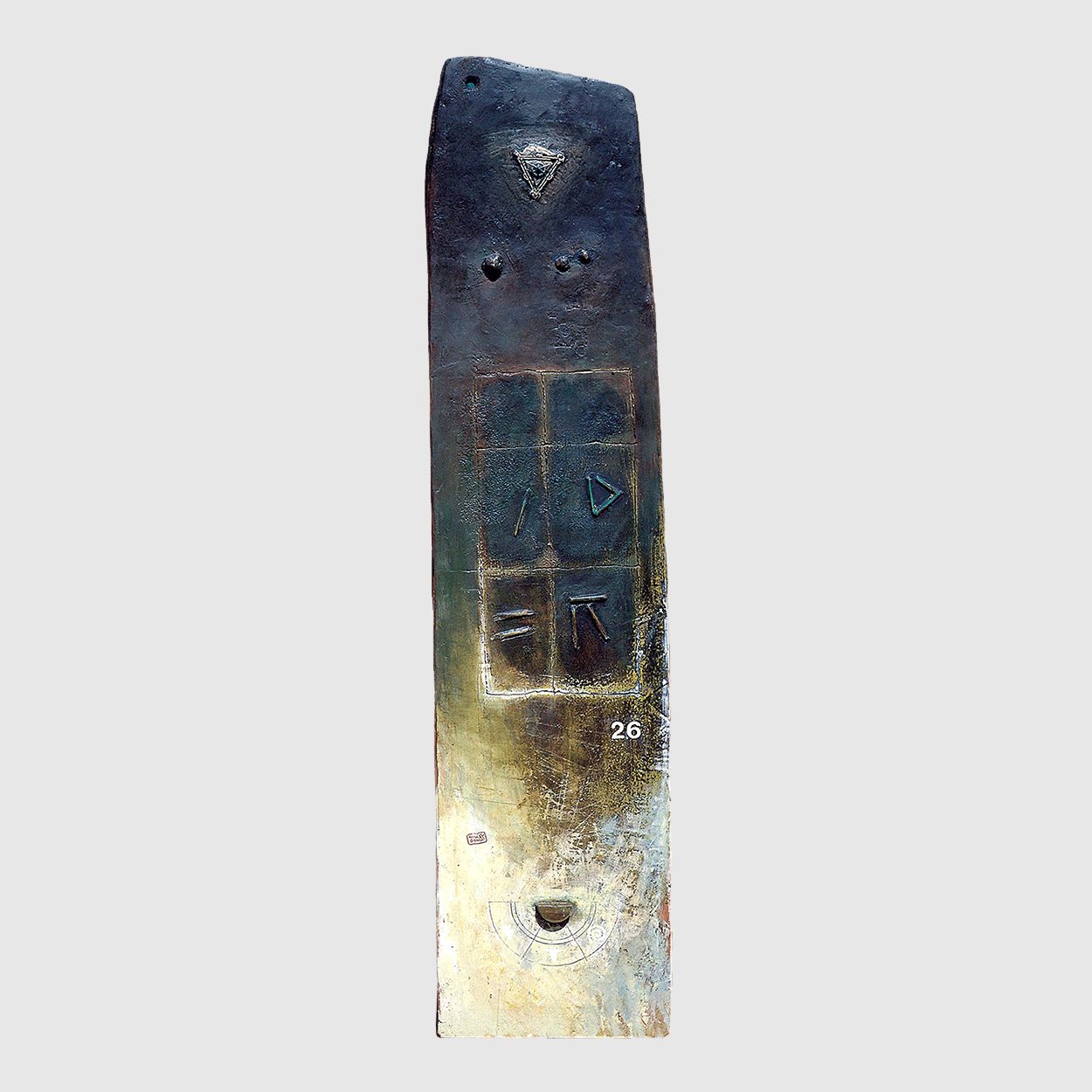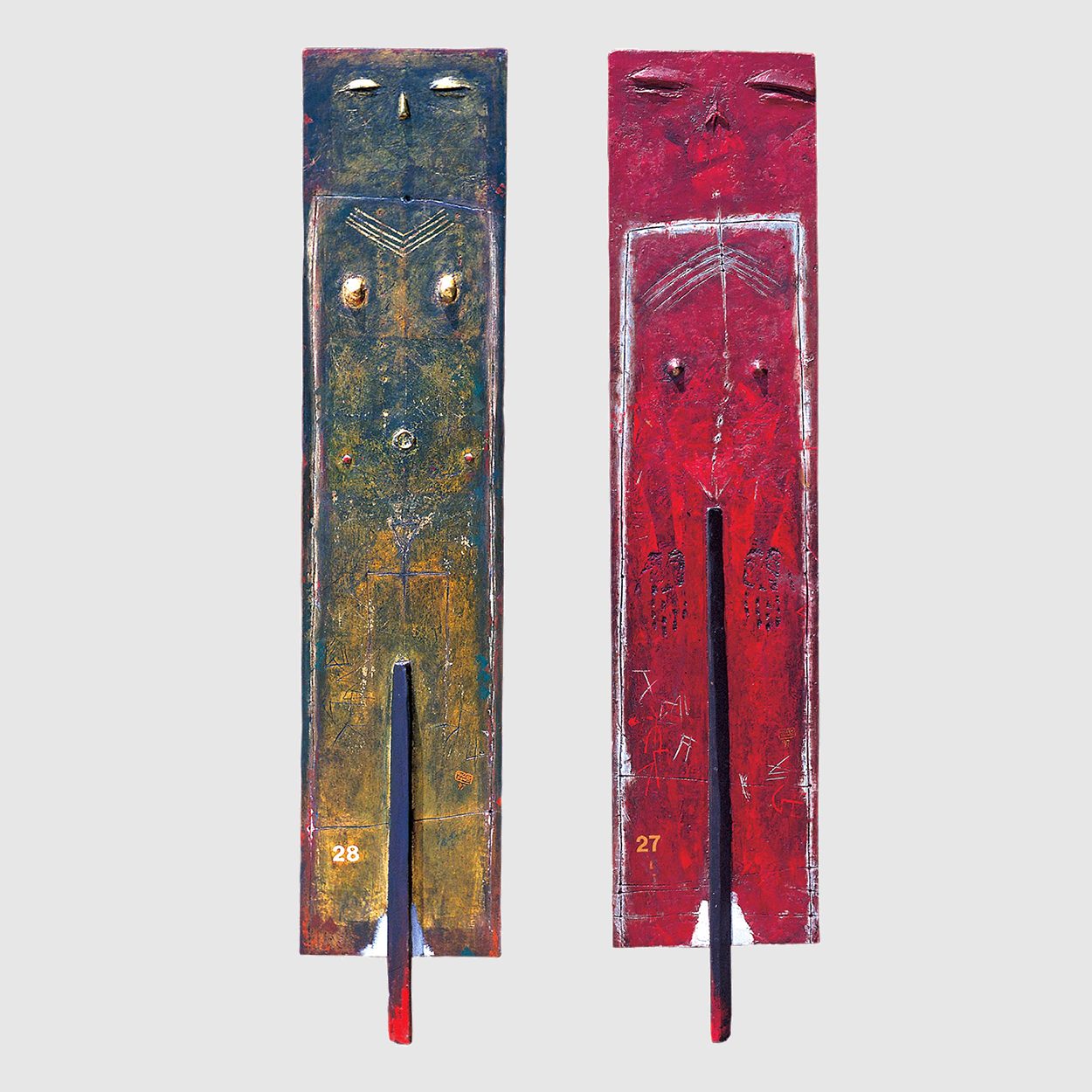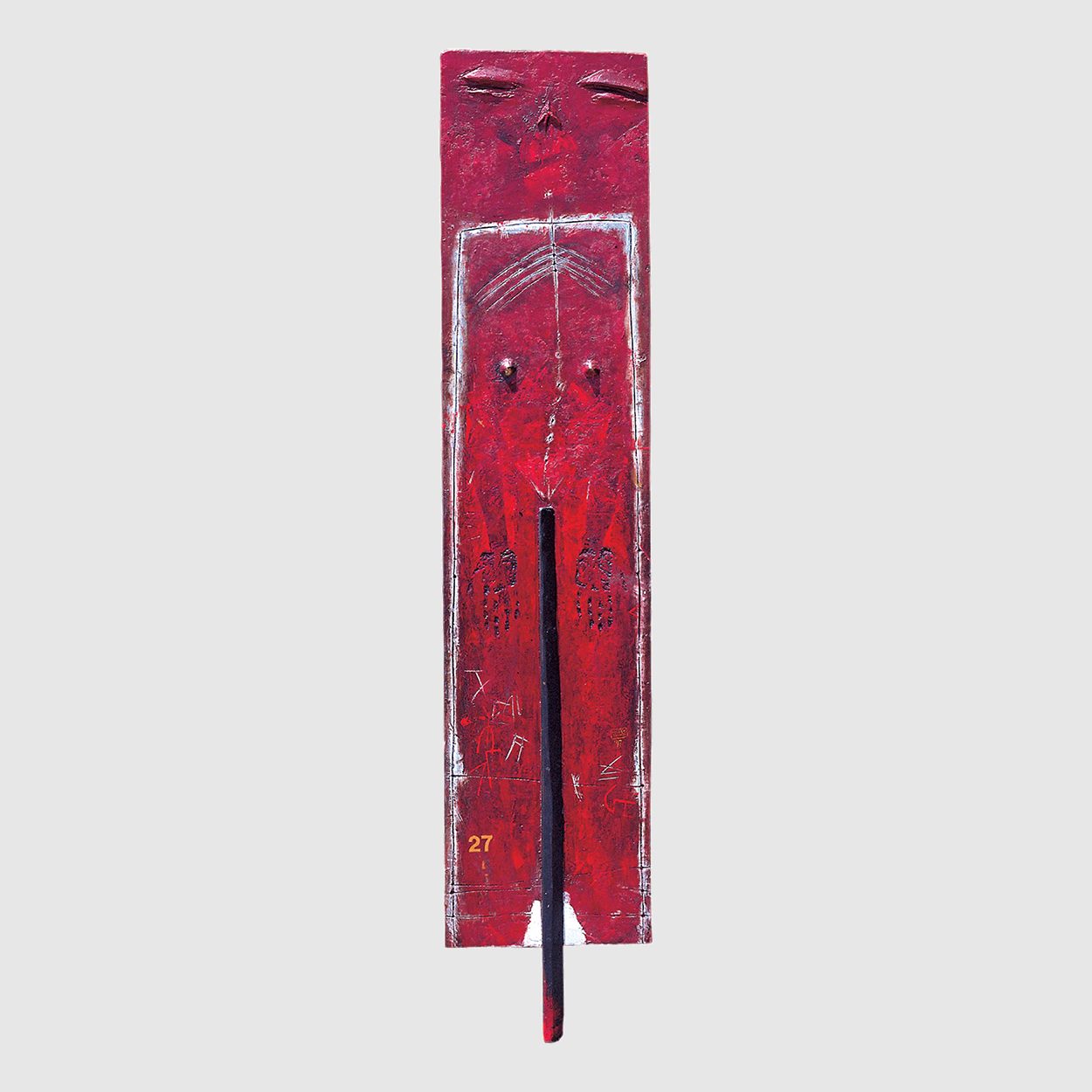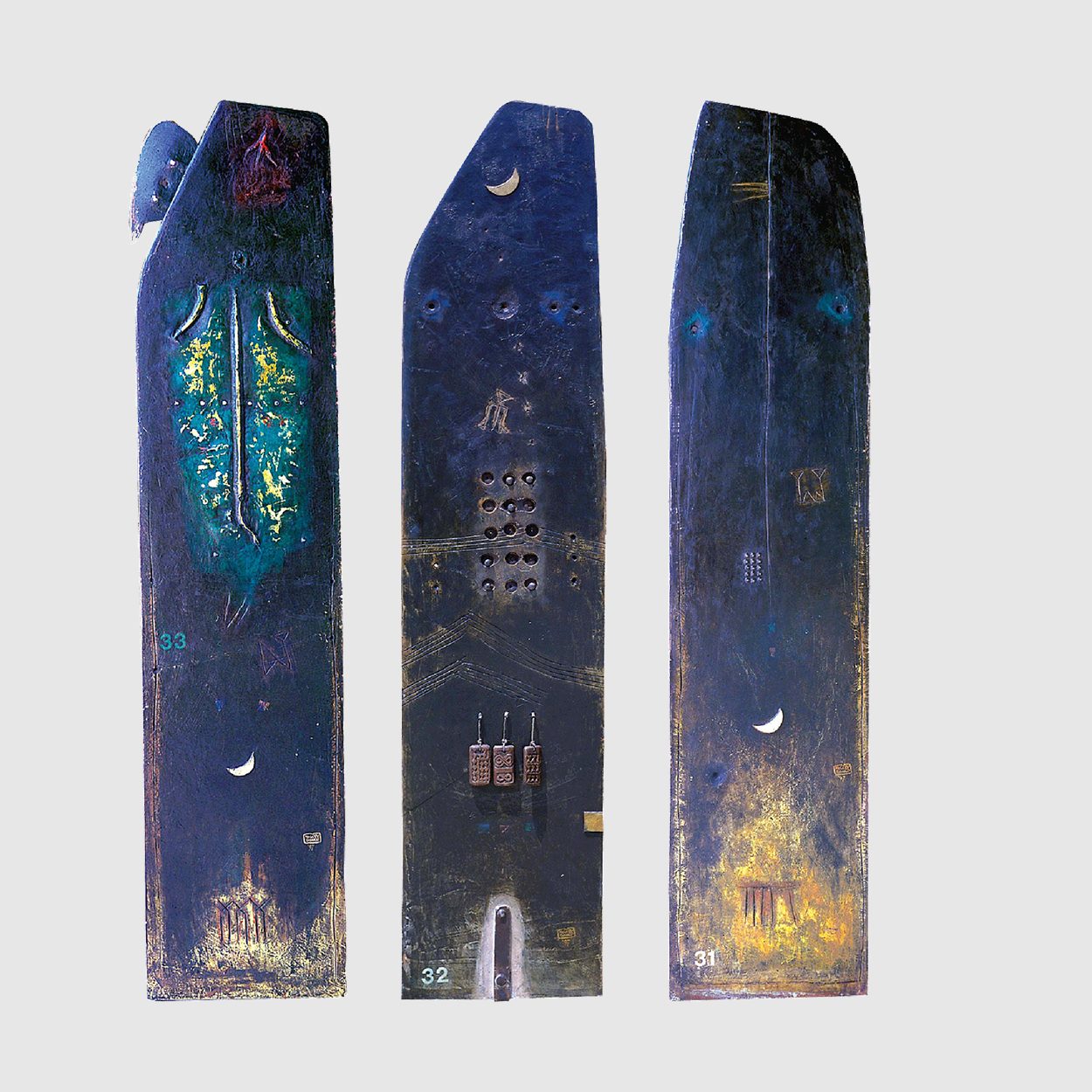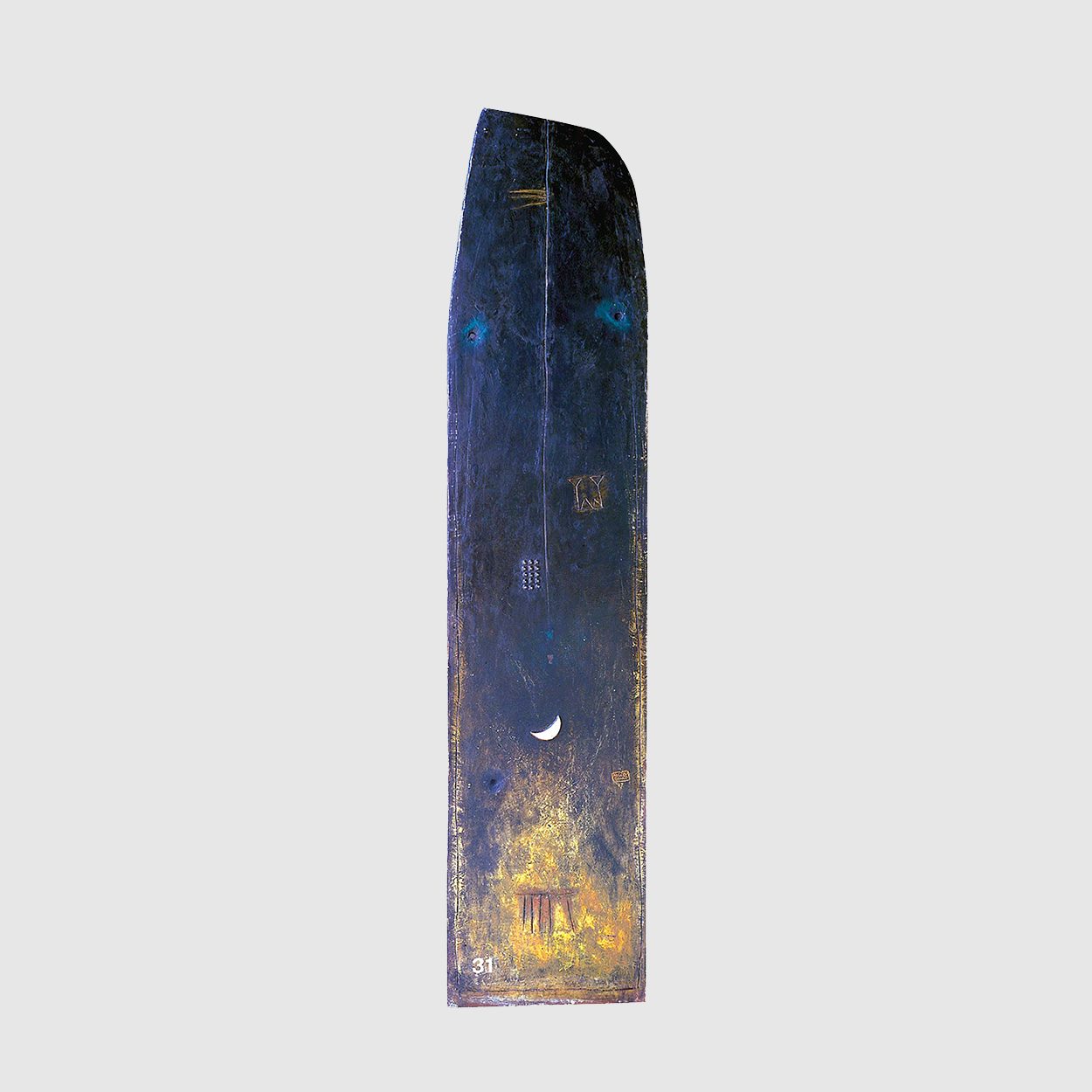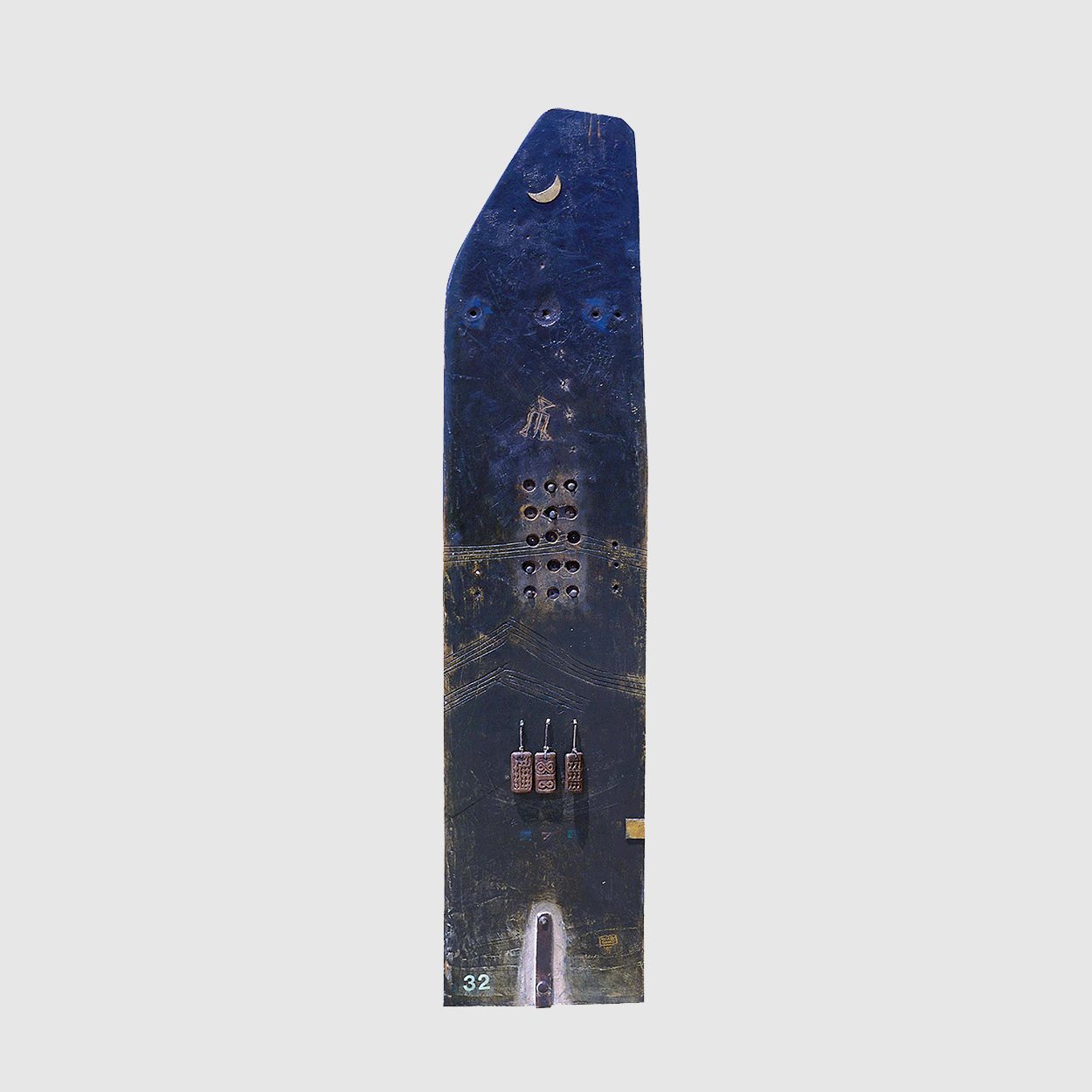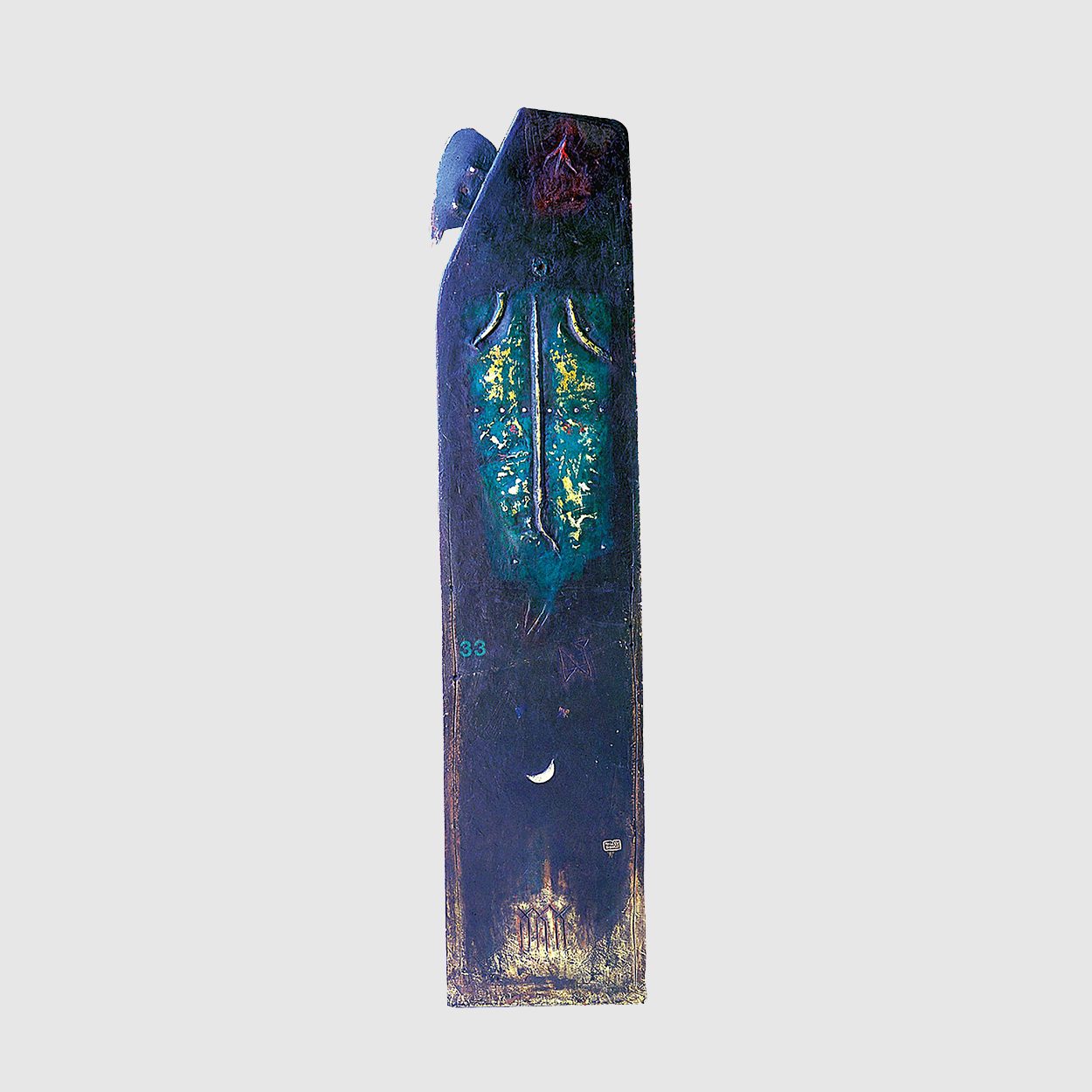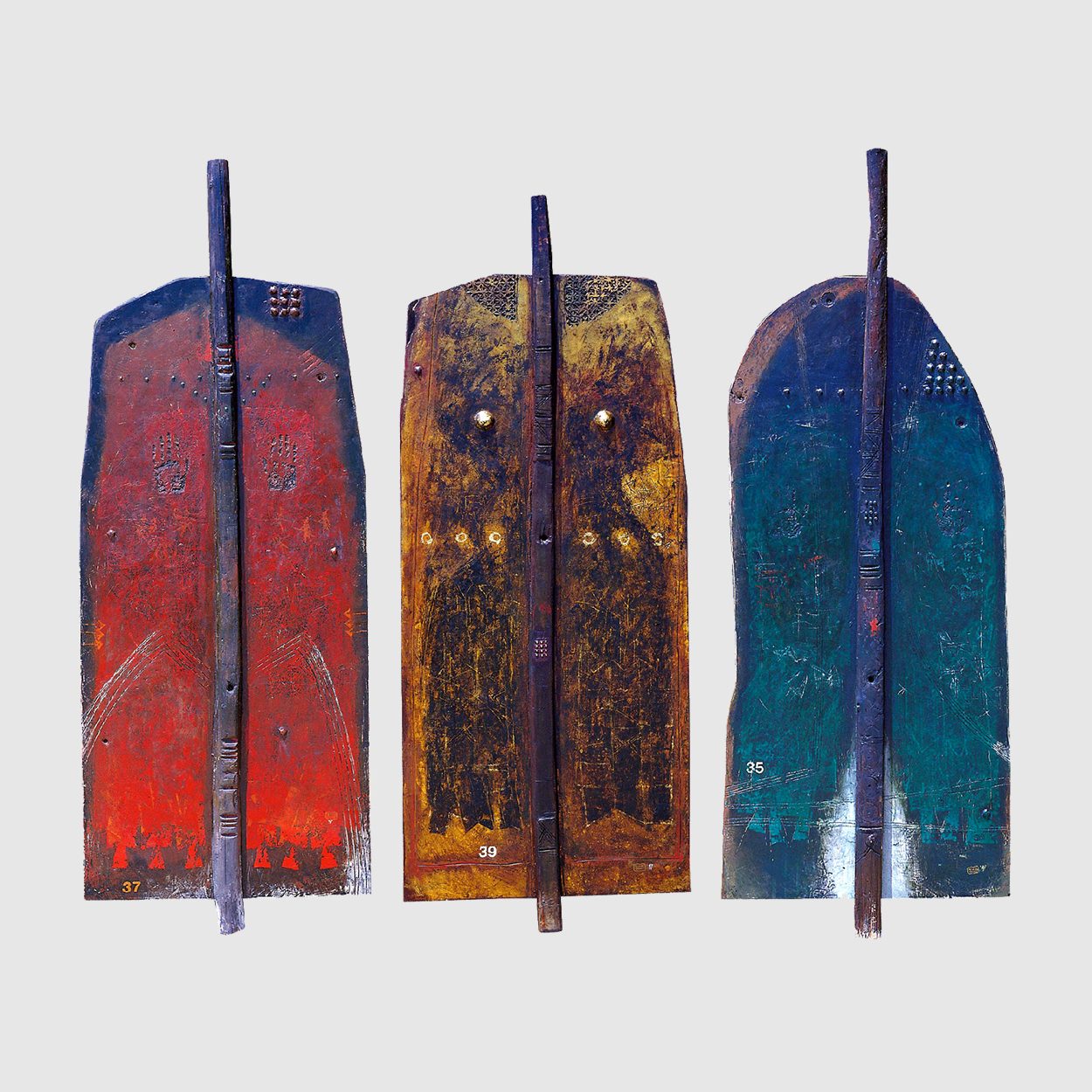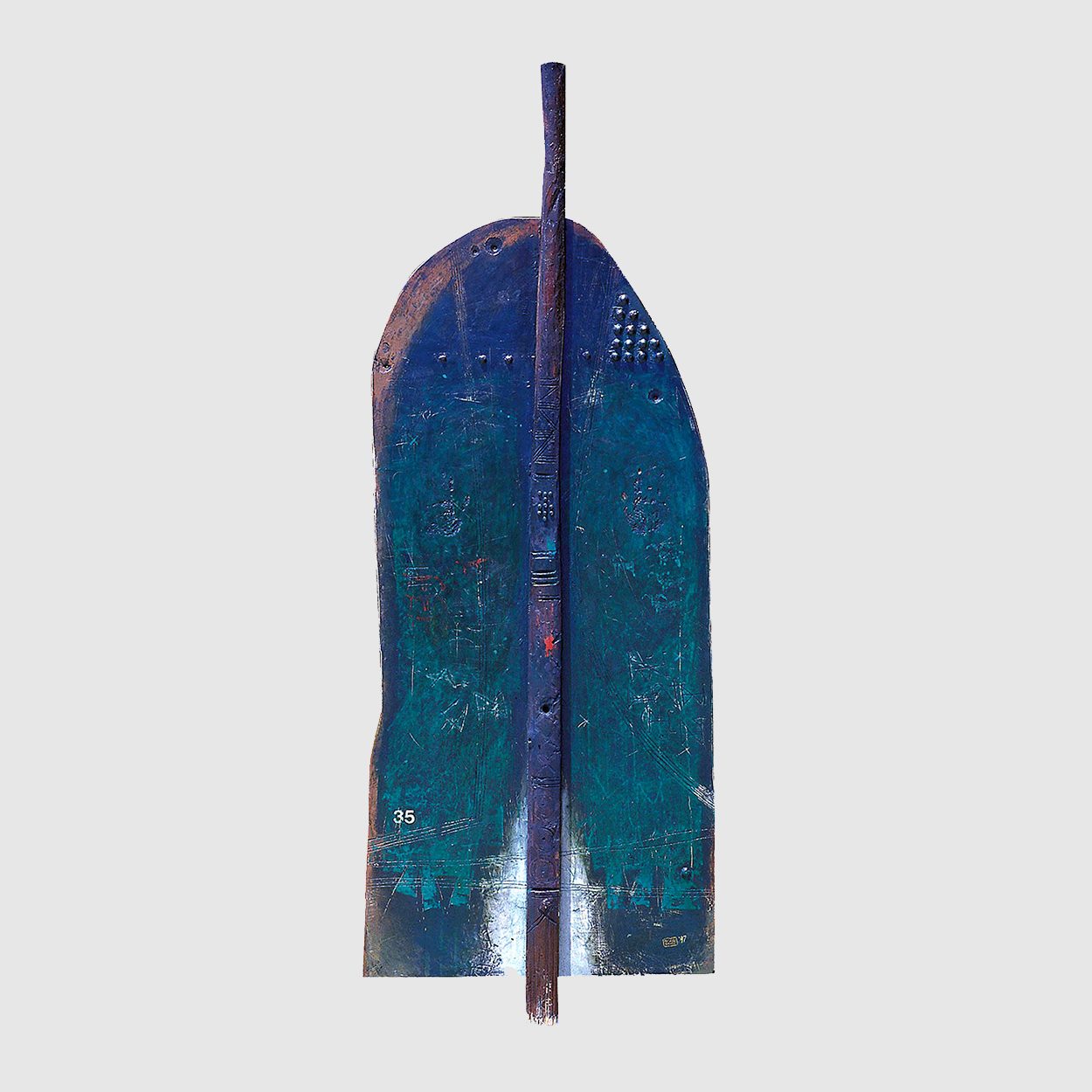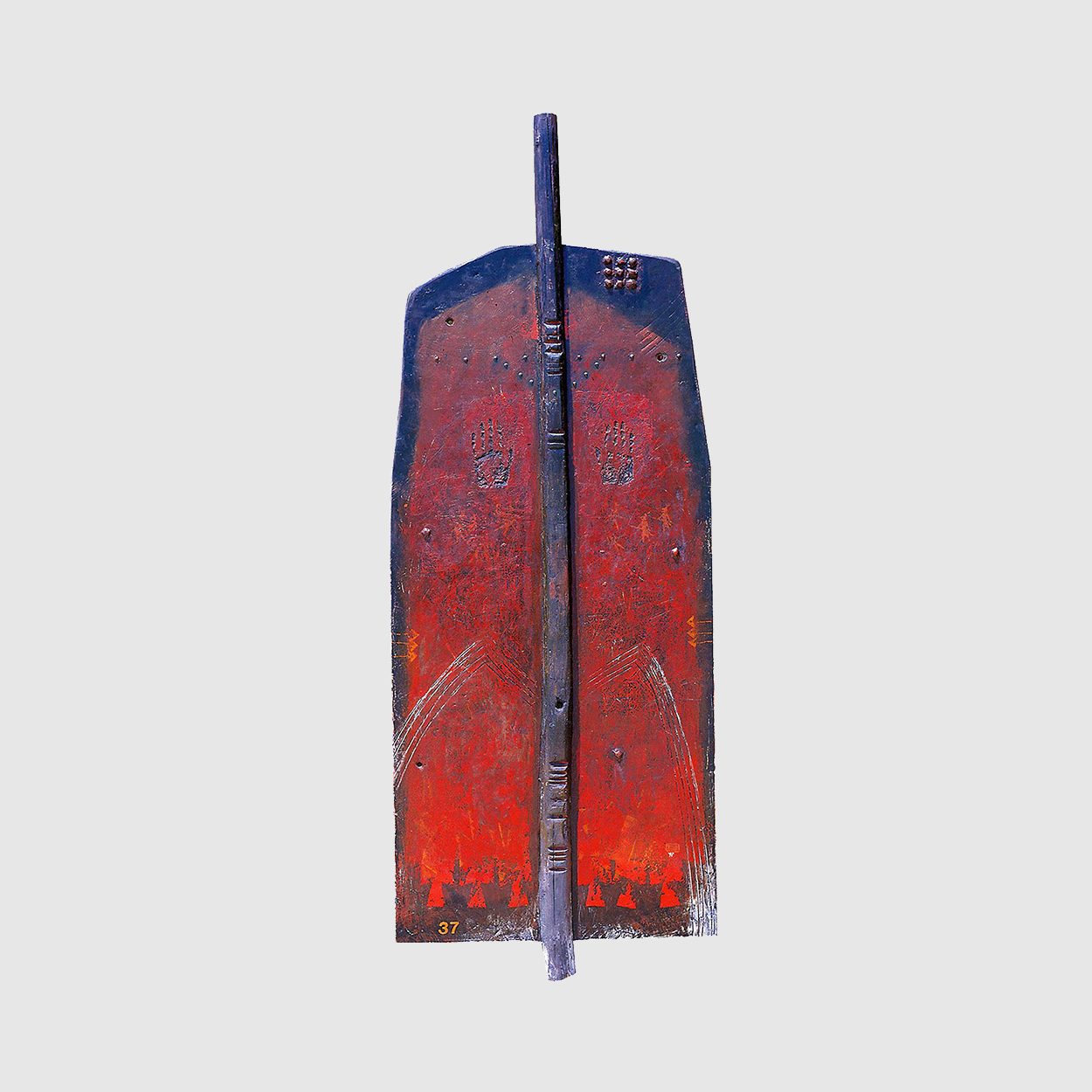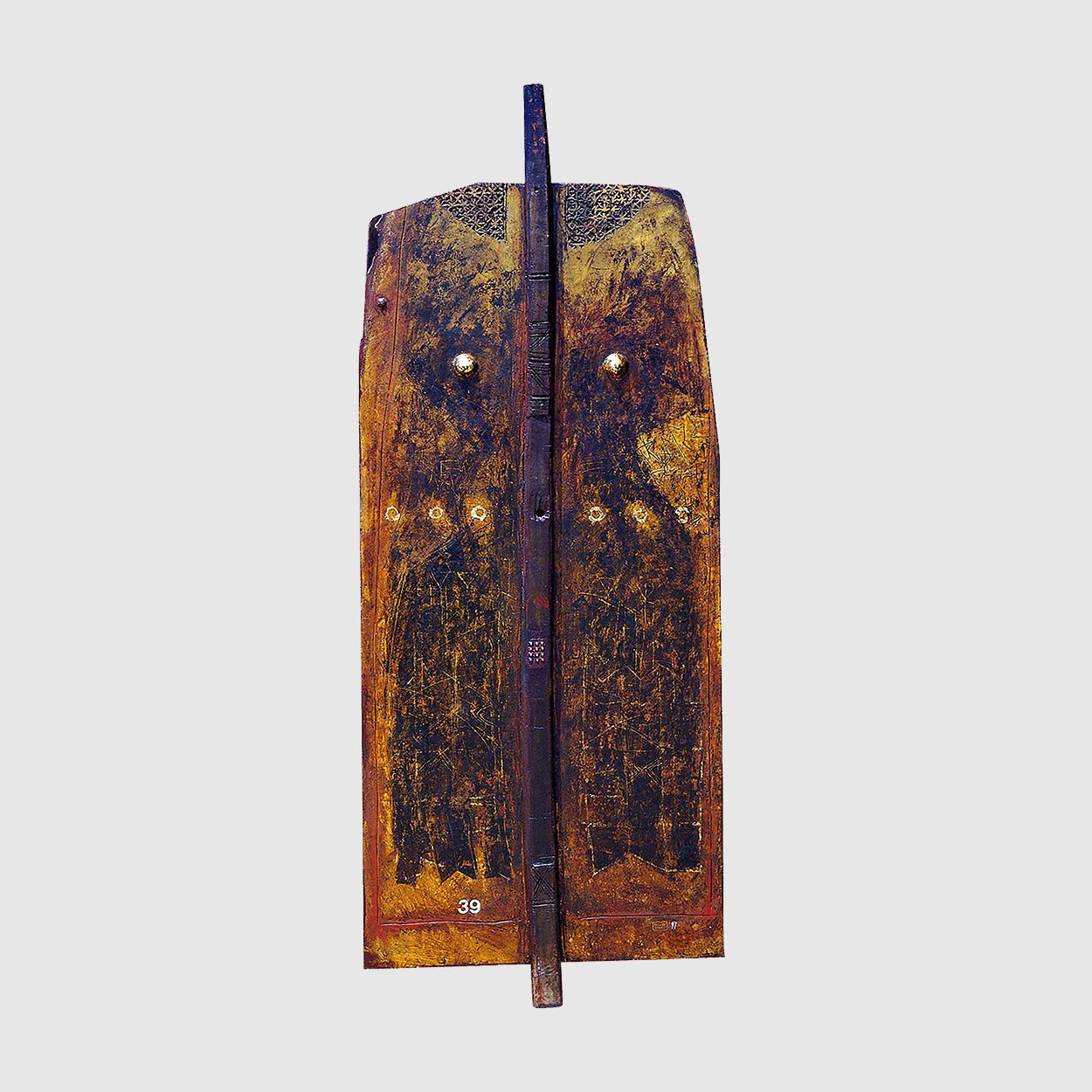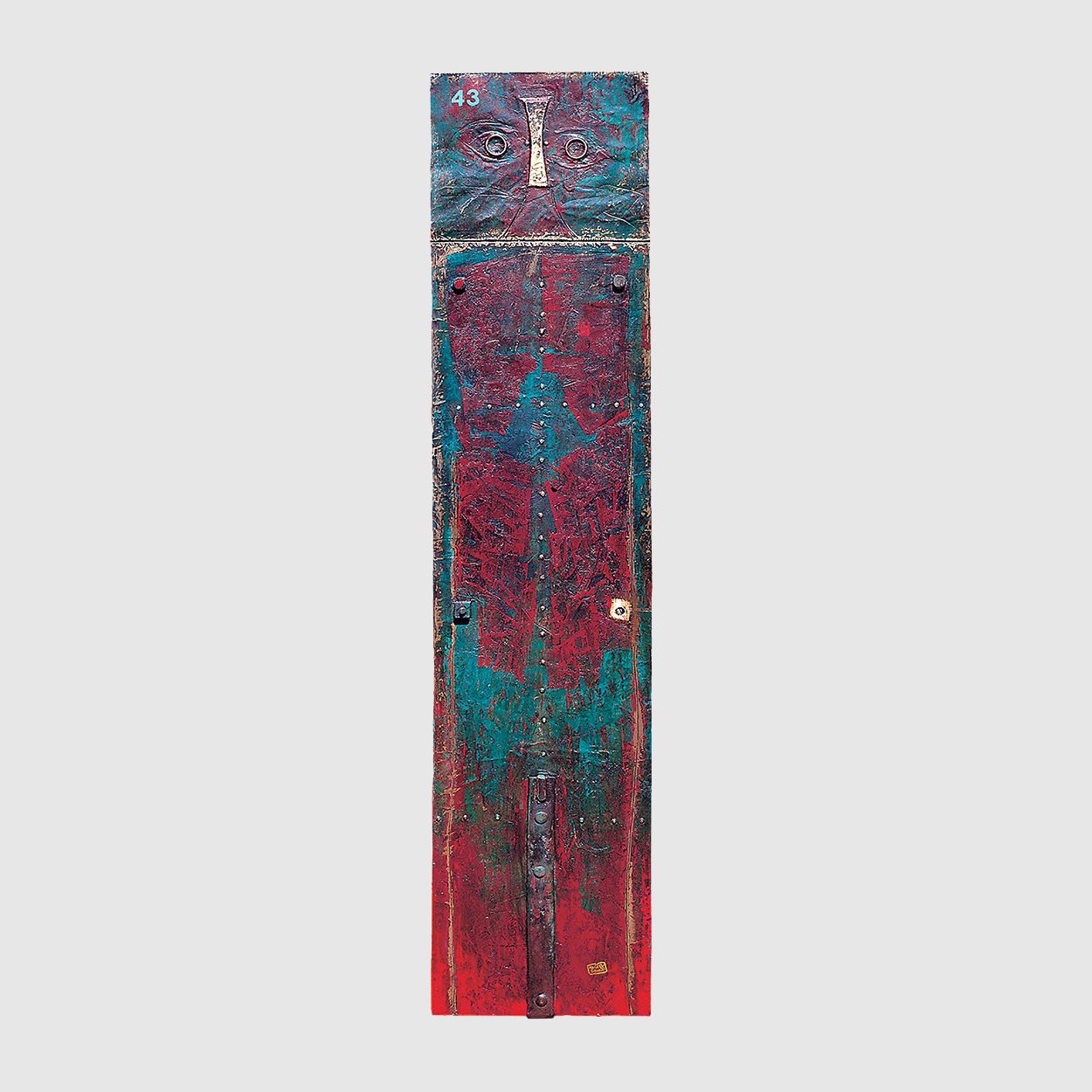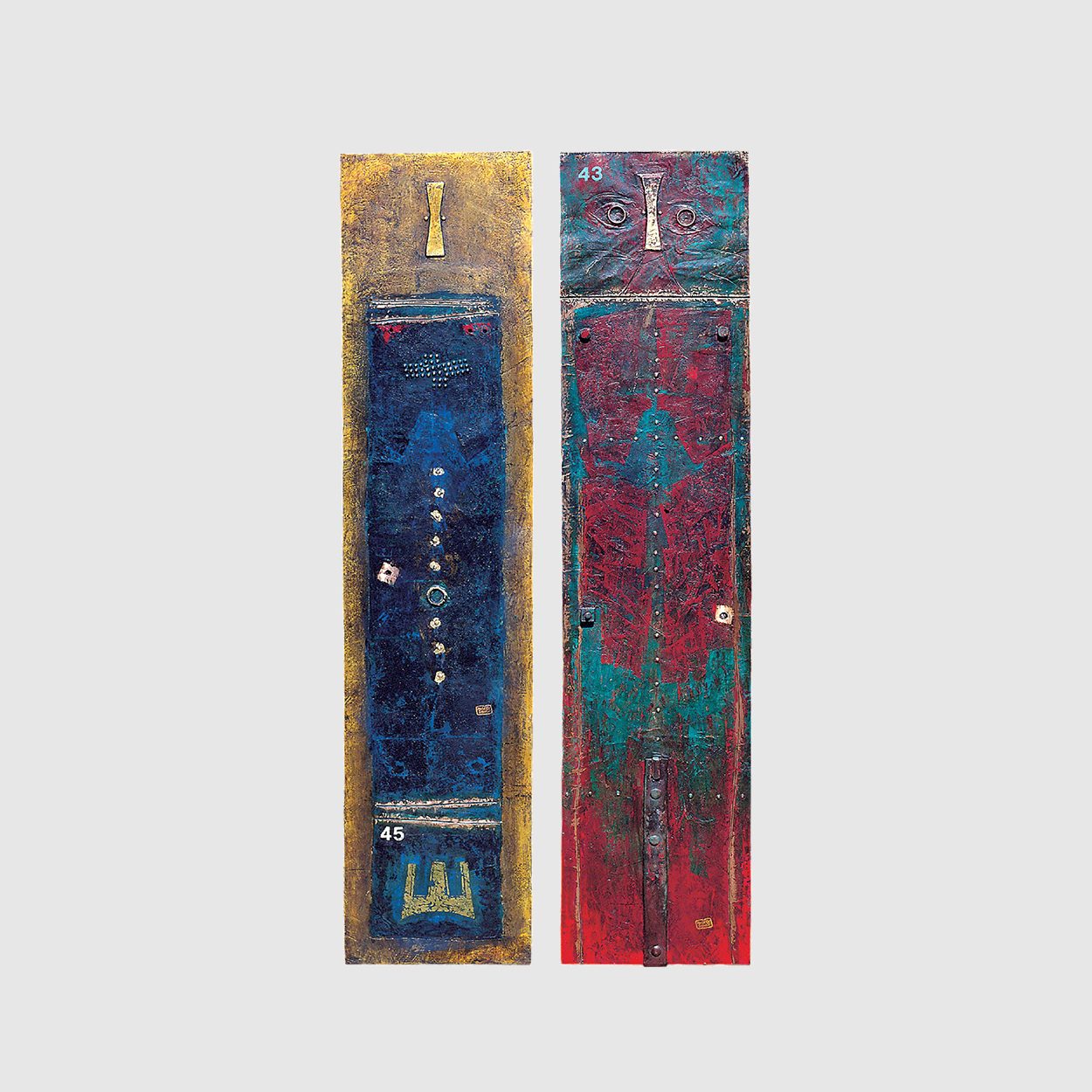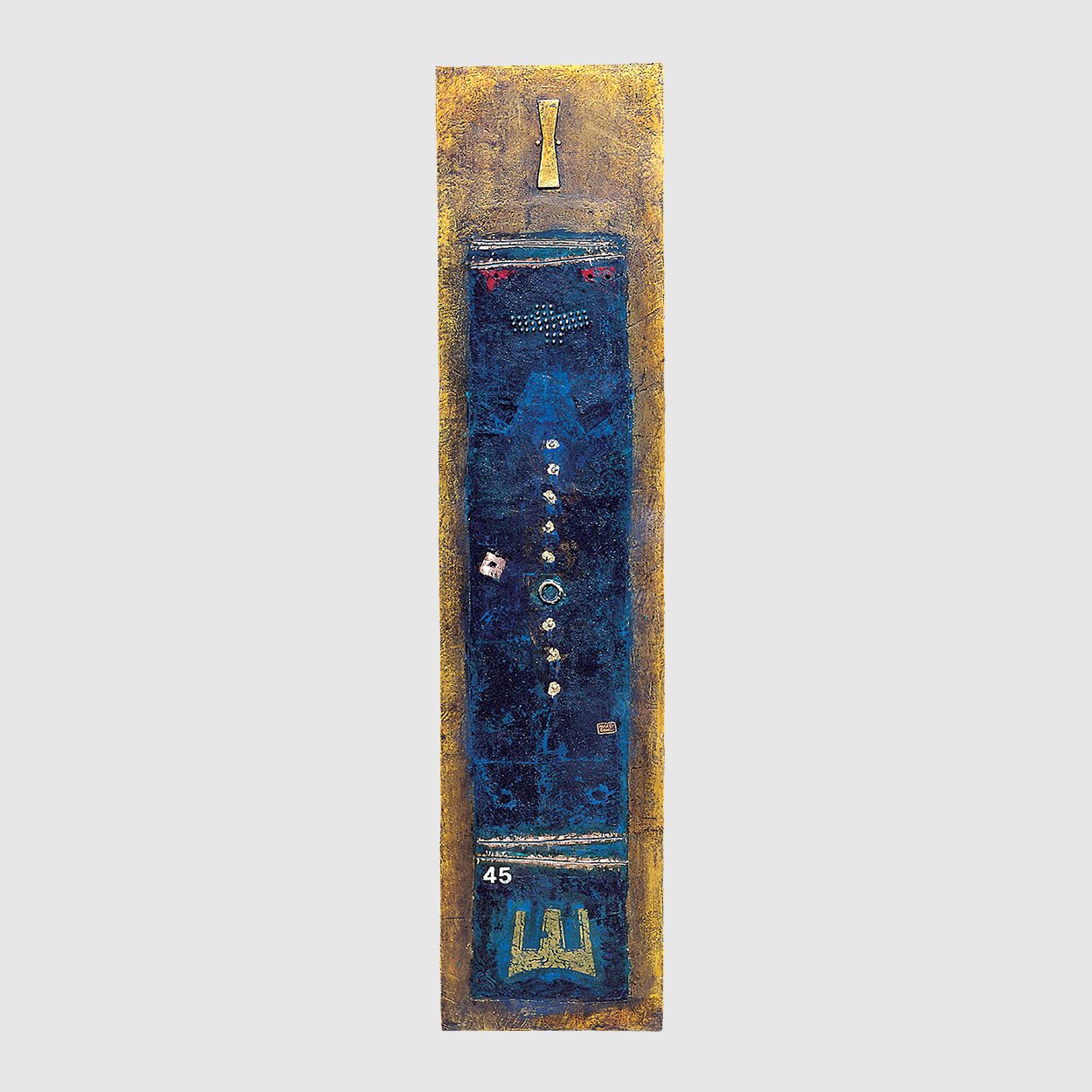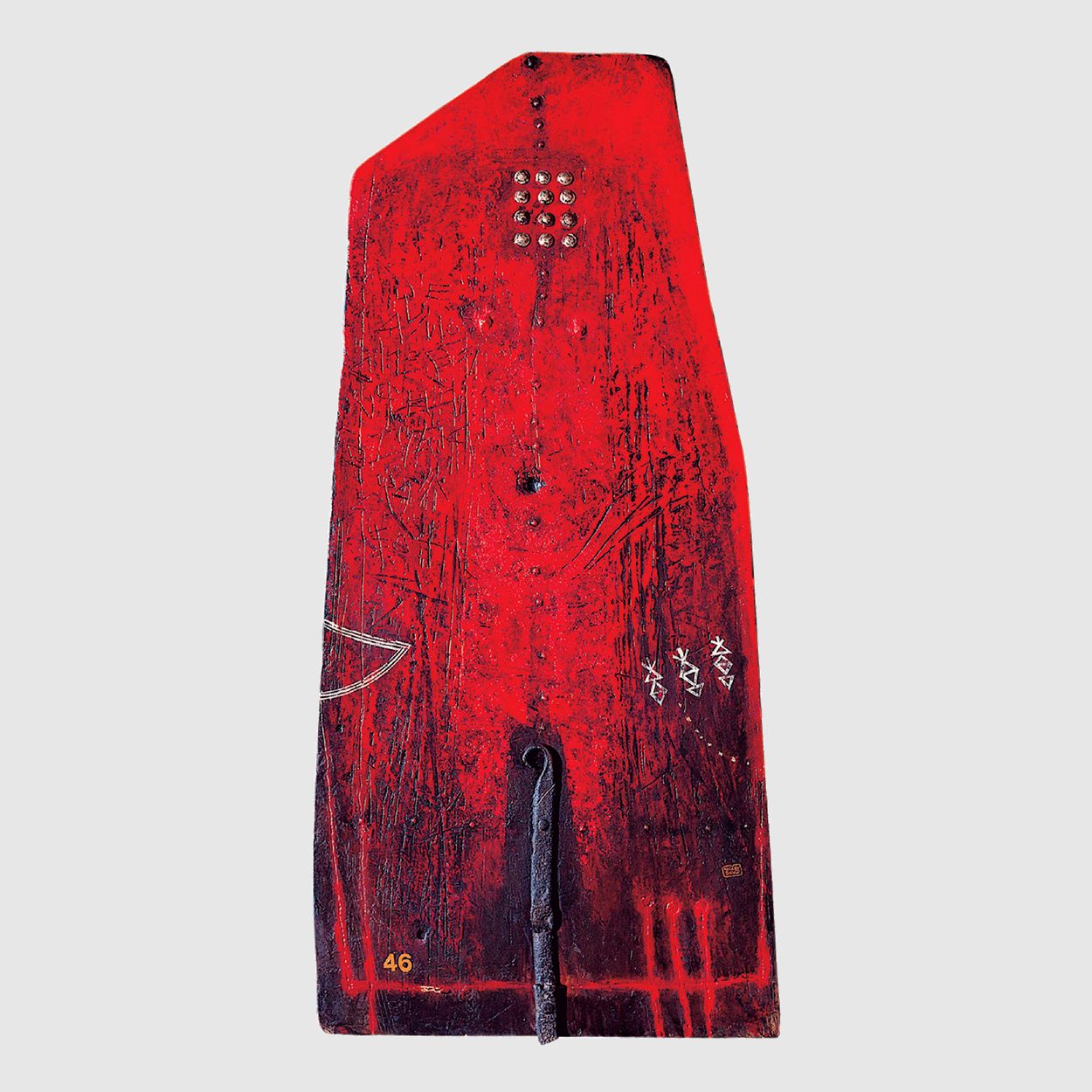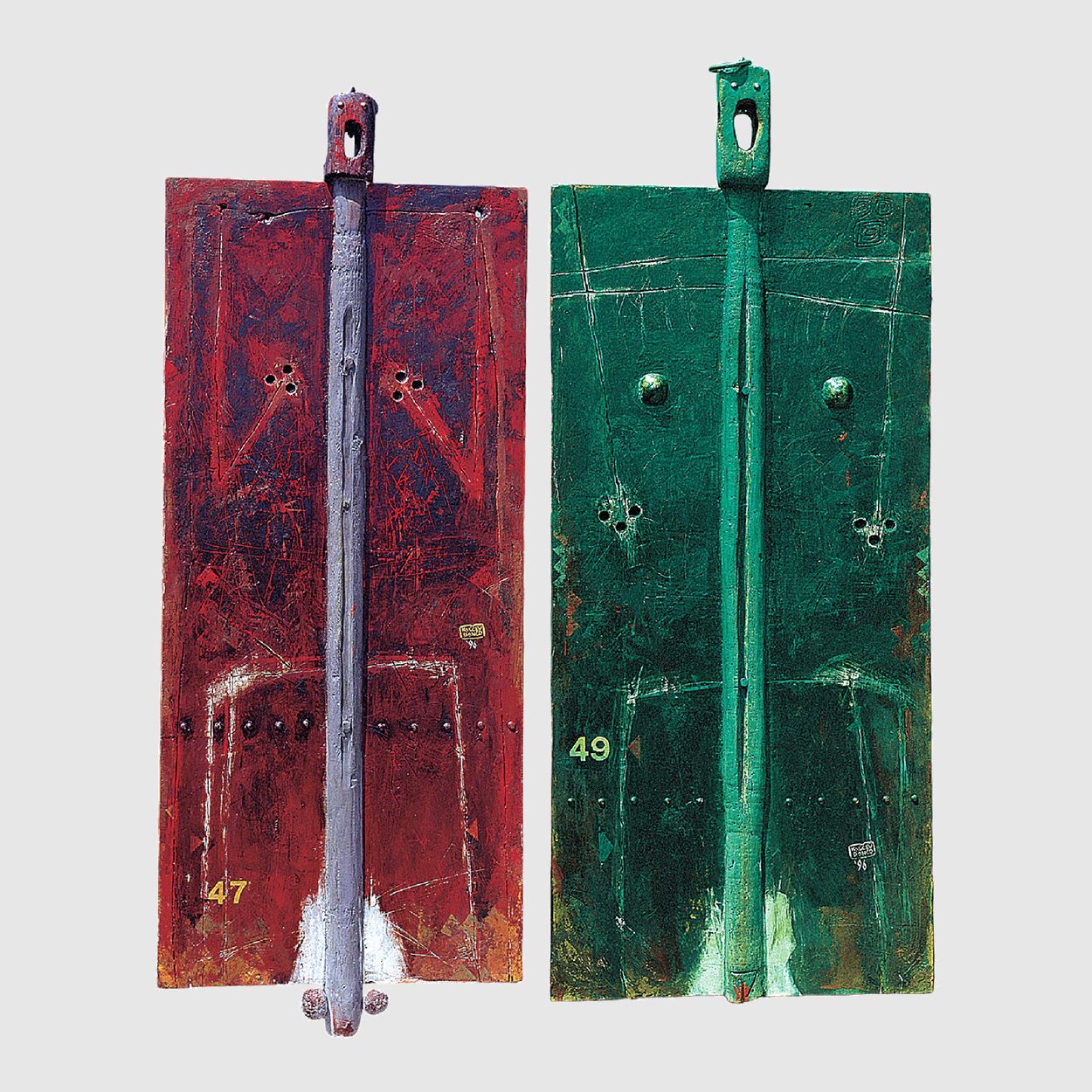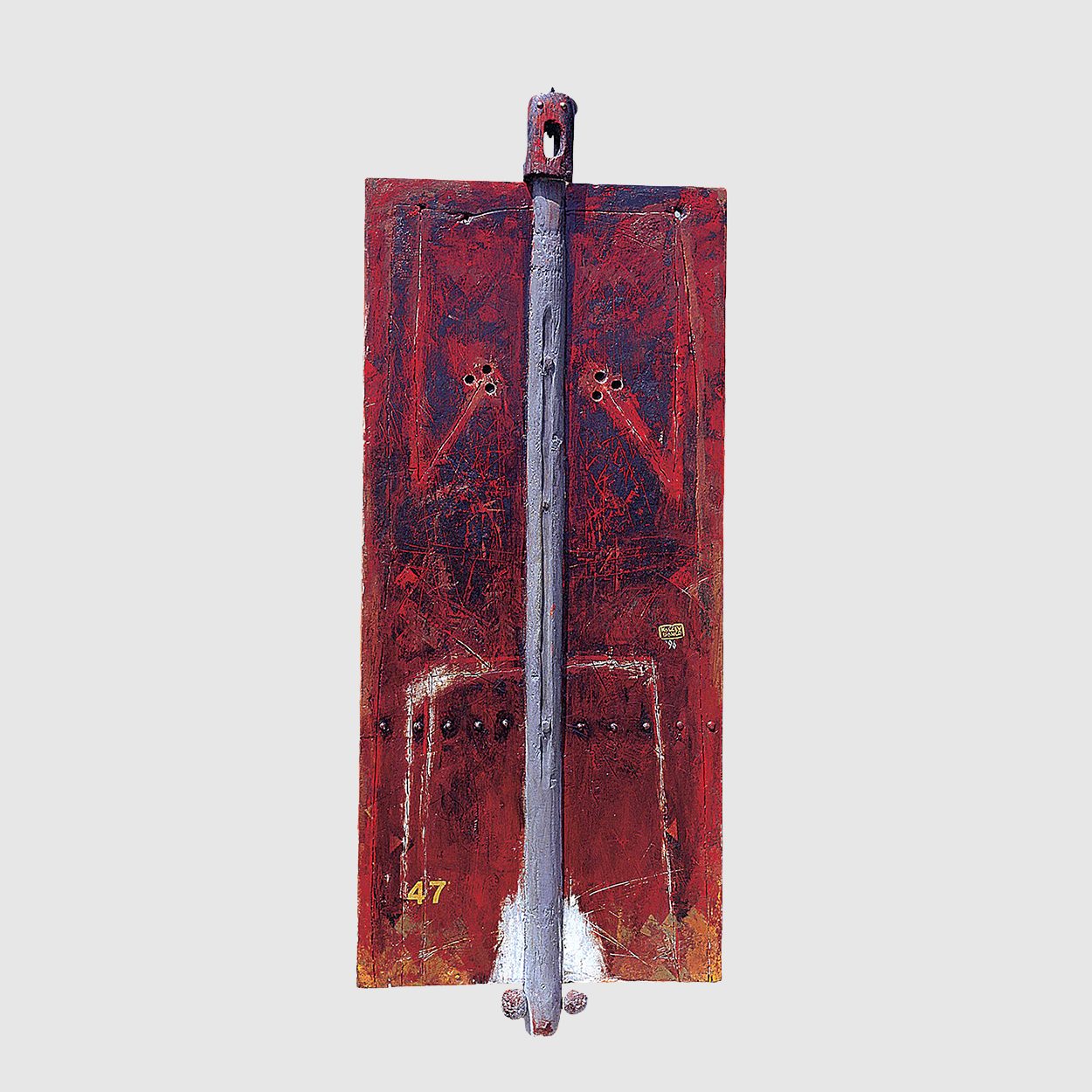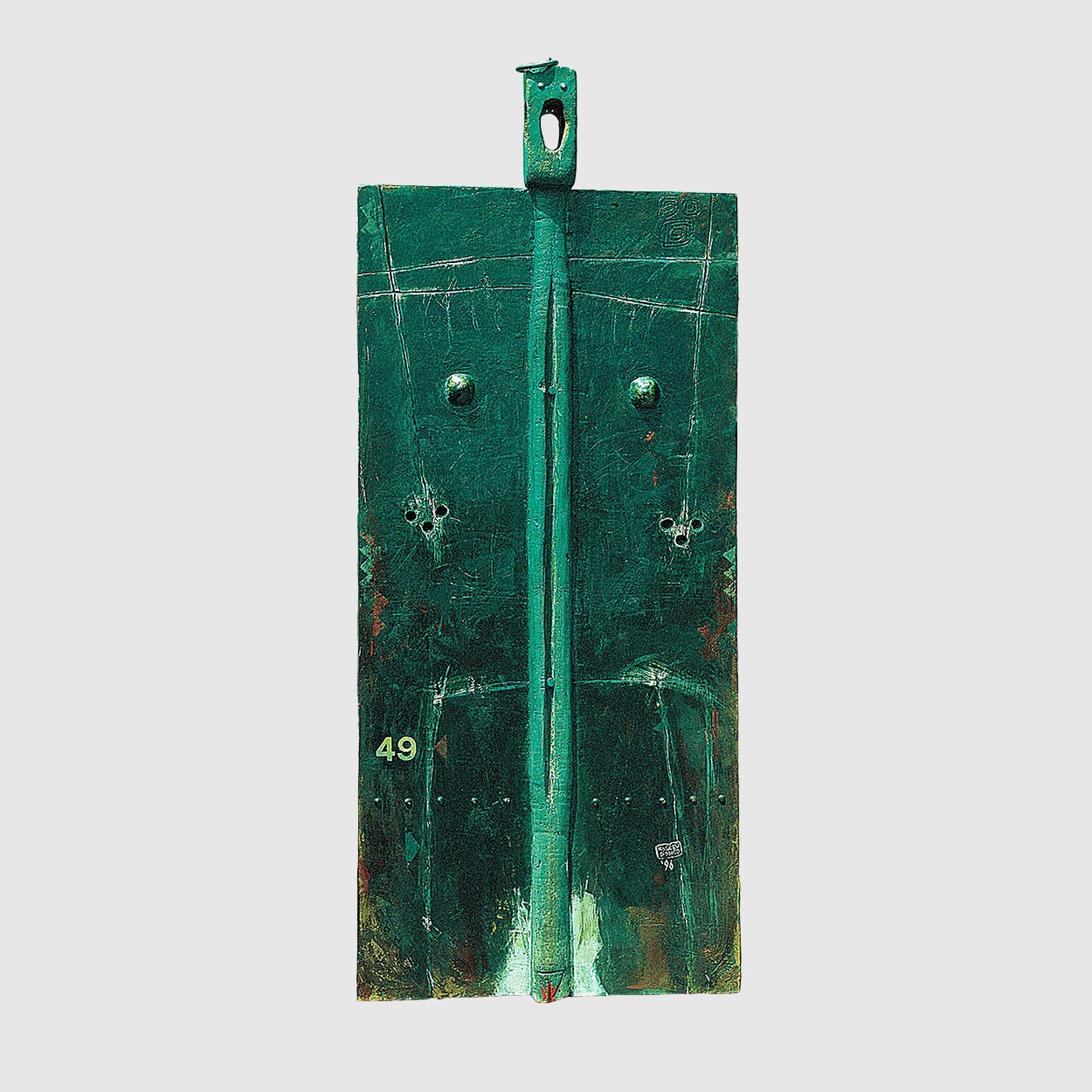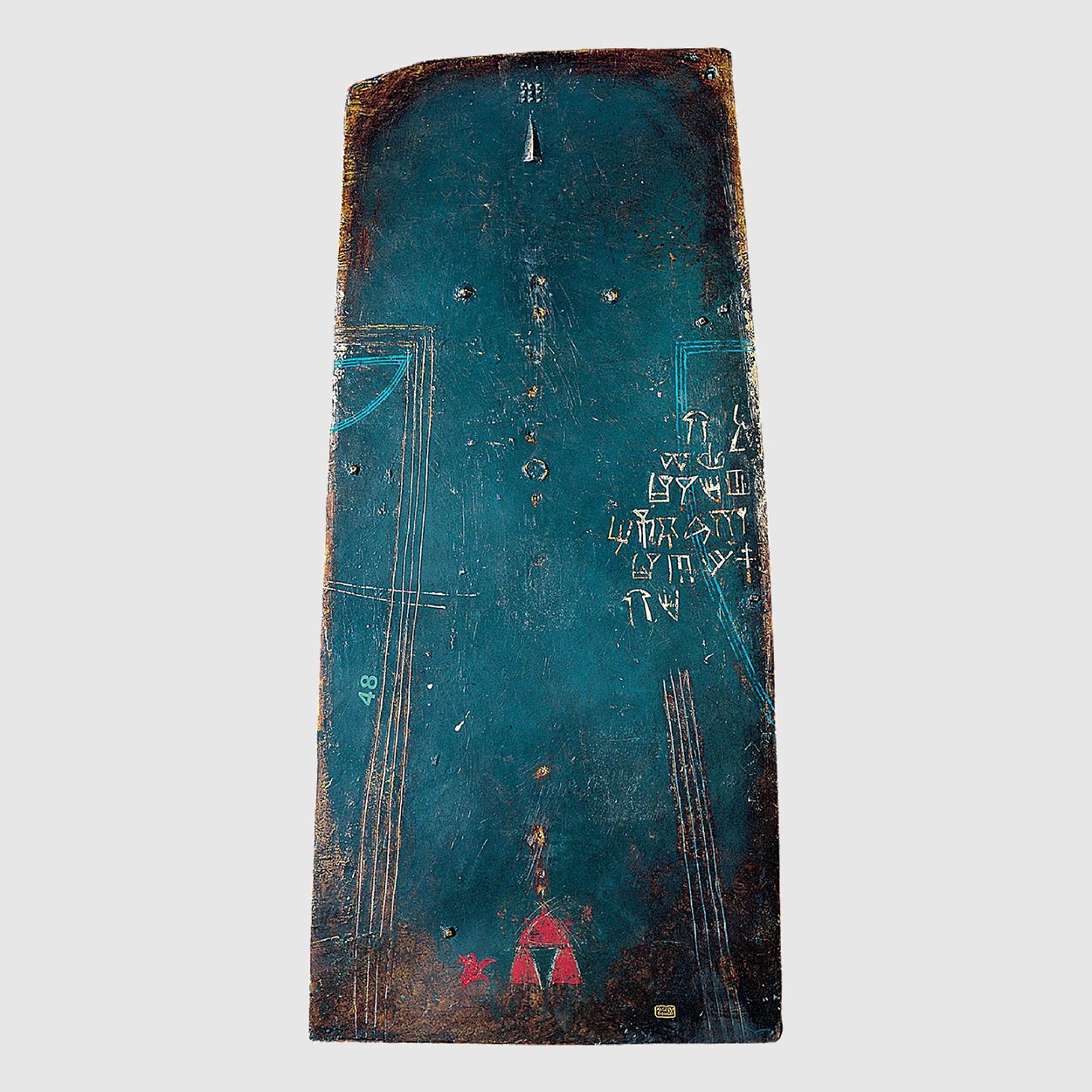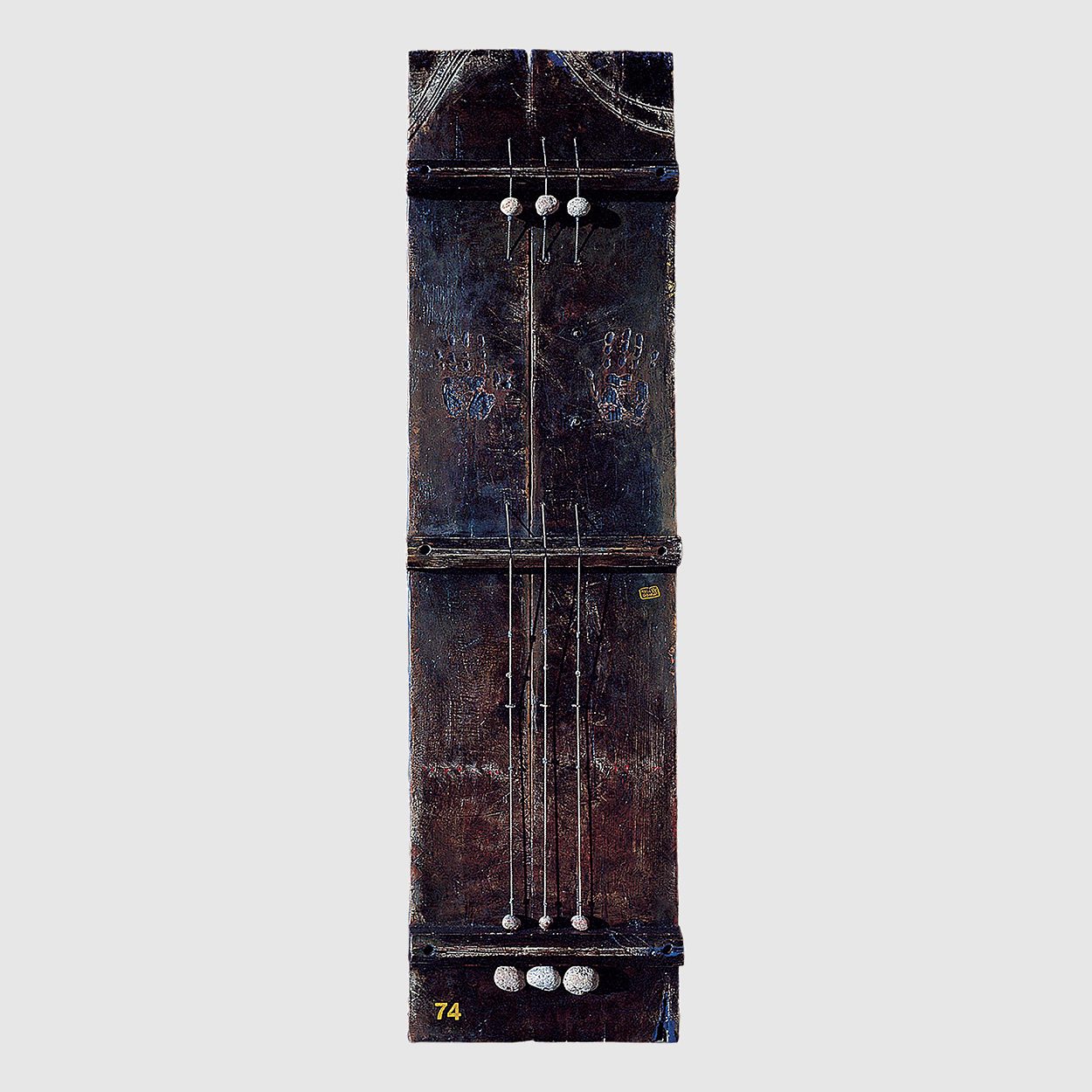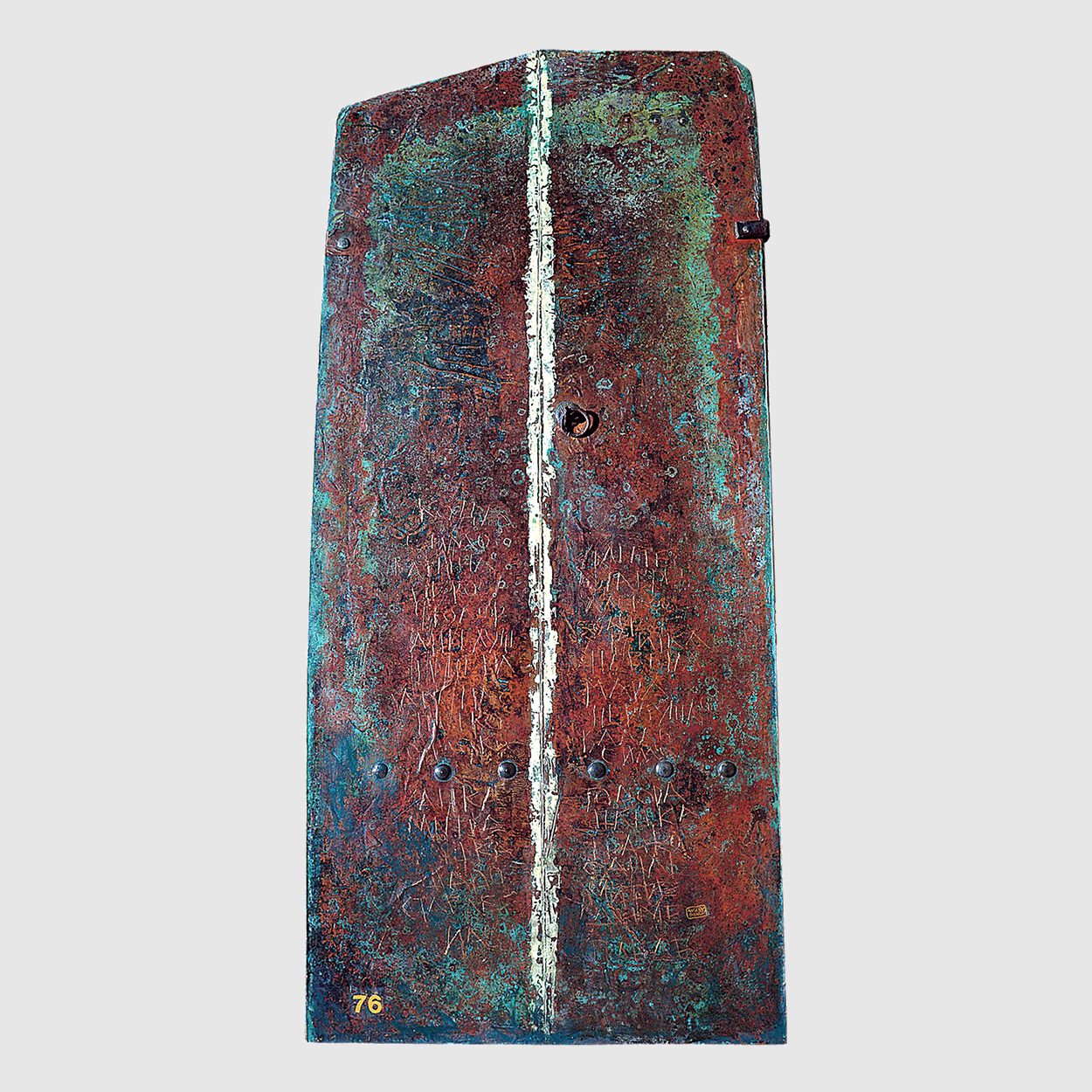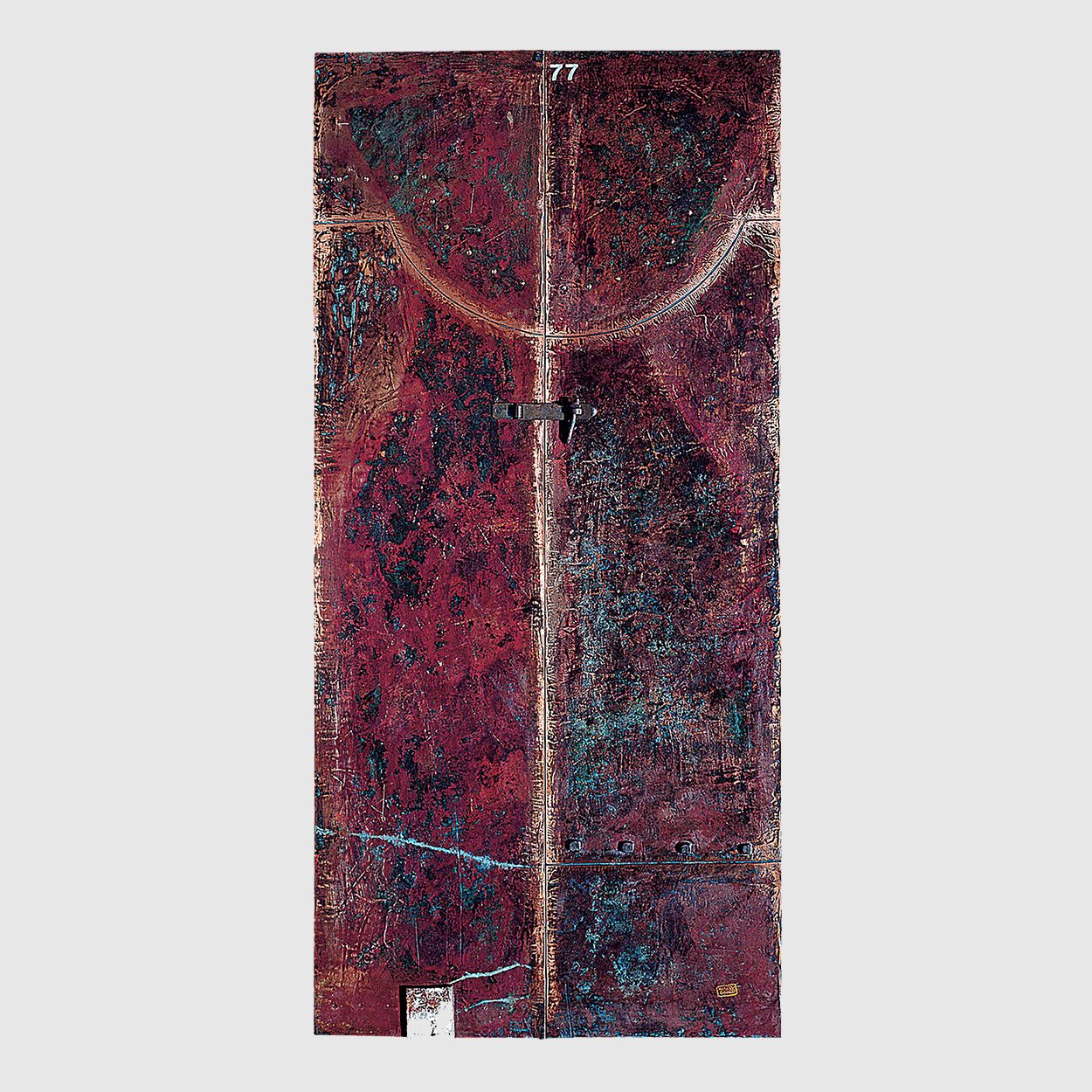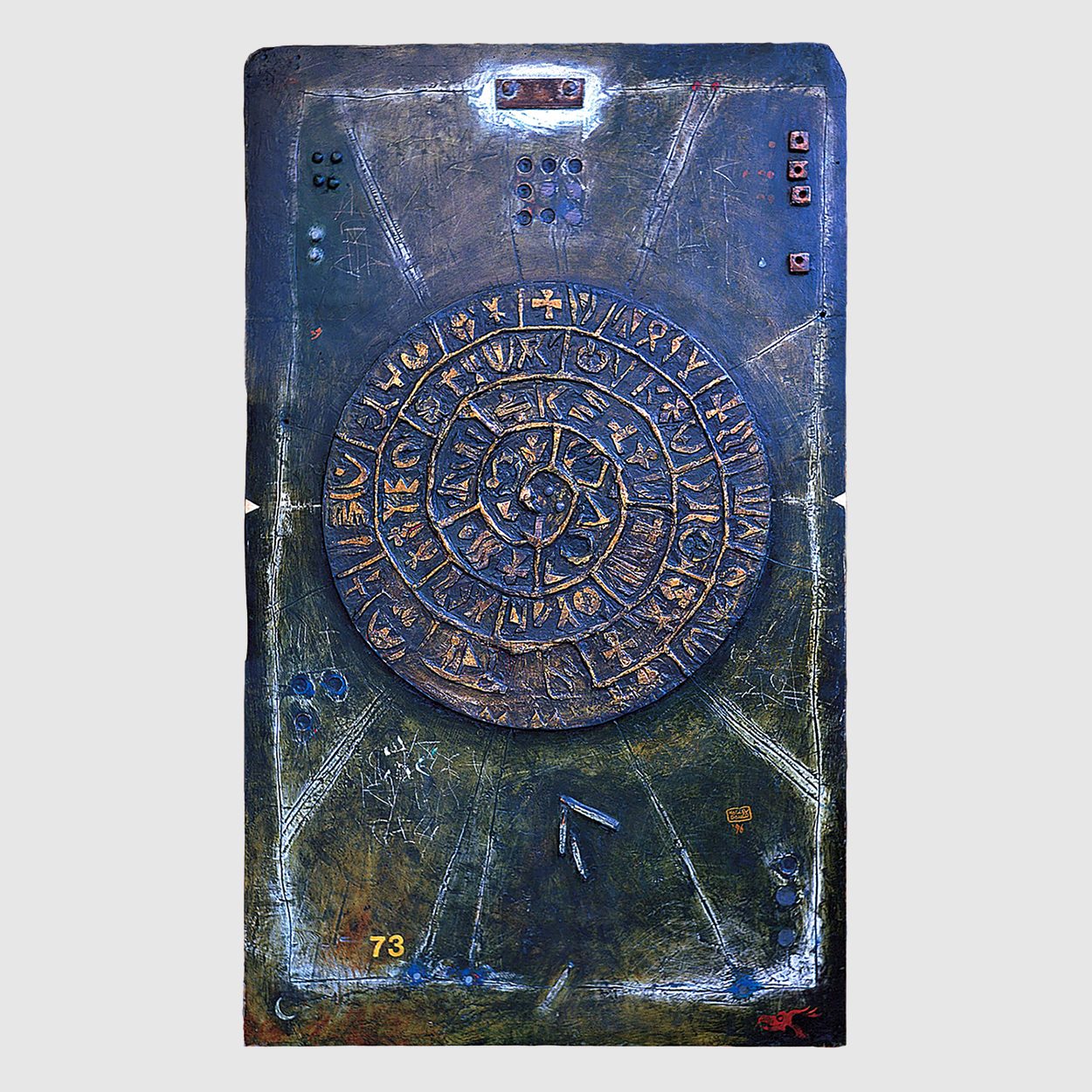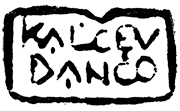Idols
The artist’s most recent cycle is entitled Idols and was produced between 1992 and I997 in the mixed media technique on a wooden base (oil, spray. metal and wood). The pre-formed wooden tablets are freed from the standard frame and hence acquire the features of object paintings. In these works. too, Kalcev pays particular attention to the surface 0f the base on which he has to organize the structure of the different elements. frequently around a central axis: the painted as well as applied and relief sections. His works are intended as individual ‘pieces.‘ but at the same time they are grouped into two or three parts in a composition whose sections essentially correspond with each other both aesthetically and in content: they are parts of a single whole. The artist aims to resolve new ideas but with elements which can be seen in his earlier works: it is the motif of letters and numerals, of pre-sign and sign forms, as well as ornamental forms and object applications which bring an emphatic tactile function to his object paintings: the effects of in front and behind, and of shabby and new. These works once again embody the motif of archaic inspiration with only outlined associations to a Macedonian gate, iconostasis forms and specific ethnic objects. His object paintings represent a surface with densely stratified signs and content which, apart from their pictorial qualities, have sculptural traits and attractiveness. These ‘collage’ entities appear as enigmas and seem to shut before us both phenomenologically and metaphorically like closed doors behind which we are not supposed to 100k for content other than the vibrancy ‘behind the canvas.’ The surface of these coloured ‘walls’ contains inscribed or painted elements producing the effect of harmony and magic, of an evocative but not reproductive painting. The artist pays great attention to the masterly, filigree treatment and subtle details of his works. The first stage of work consists of applying colour with broad strokes and expressiveness, followed by a process of gradual condensation and selective building of the whole. The intensity of the base colour determines the intensity of the upper layer of paint, applied in warm or cold nuances and doses. The artist explores the possibilities of the ‘language of the medium’ and the aspects of the idea, underlining the mystical unity of the sensory and rational, of experience and contemplation. Kalcev’s works attract by the treatment of lines, which can be found in the forms of inscribed or painted interventions emphasizing the rhythm of the composition and from which the sign forms are produced. The materials used arouse the feeling of a ‘touch with one’s eyes,’ and also of physical touch as an intended tactile mimesis. Kalcev’s works reflect an aspiration towards the ‘return to primeval origins’ in a balanced dichotomous way: he combines the asceticism and opulent solemnity of the chromatic and sign structure with decorative elements. His interest in the concretization and materialization of object painting is presented in an impressive way, just as convincing are the connecting threads between the elements constituting the works. The meaning of the whole is completed by the individual colourist accents and motifs of a spontaneous écriture, as well as by the alphabetical and numerical motifs in order to suggest in a symbolic manner the enigma quality and psychological detachment from the work he has created. He does not turn his painting into an object, at least not at that moment, but juxtaposes both in equal interaction, as components balanced in their complementation. His ‘project of emphatic subjectivity’ entails the need to express mysterious intimations in content as well as a formal appeal resulting from the closed world of intimate experiences. The combination of different data and sophisticated riddles implies a form of communication carried out at different levels. The object painting represents an individual object body where a true symbiosis between the painterly and the sculptural/plastic medial quality takes place, as suggested and formed by the imprints 0f the human hand and spirit. The imprints are symbols of the “mystical and mysterious moment in us” that reveals the possibility for us to transcend the material world and plunge into the metaphysical world of the spiritual. Kalcev has learnt how to look around himself, and even more within himself, affirming the subjective experience and understanding of art as a new birth of thought, spiritual contemplation and mysterious intimation.
